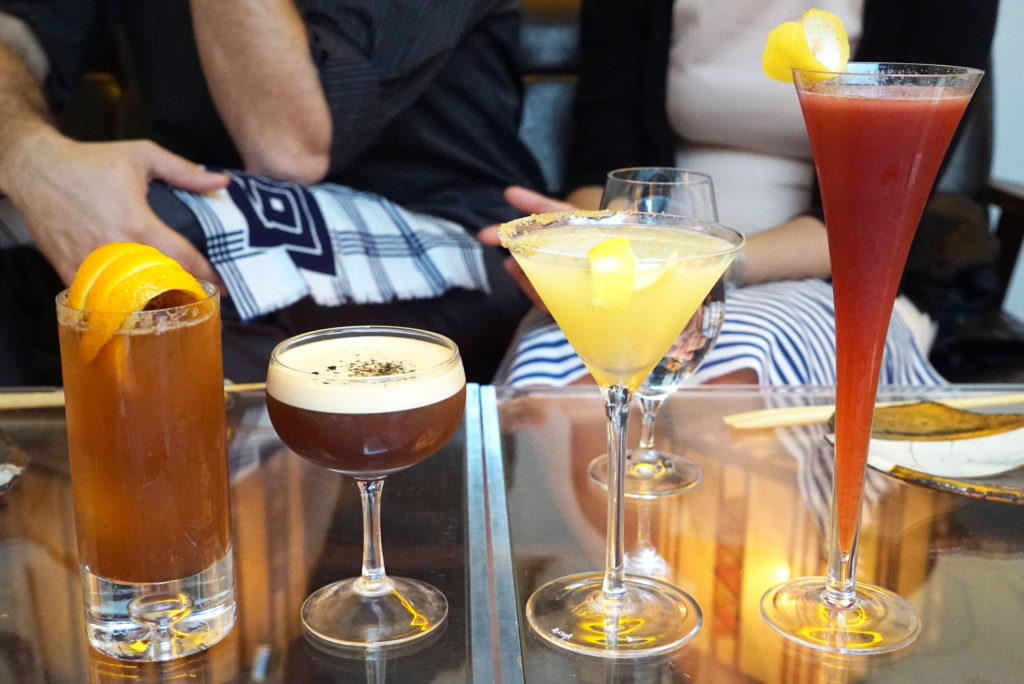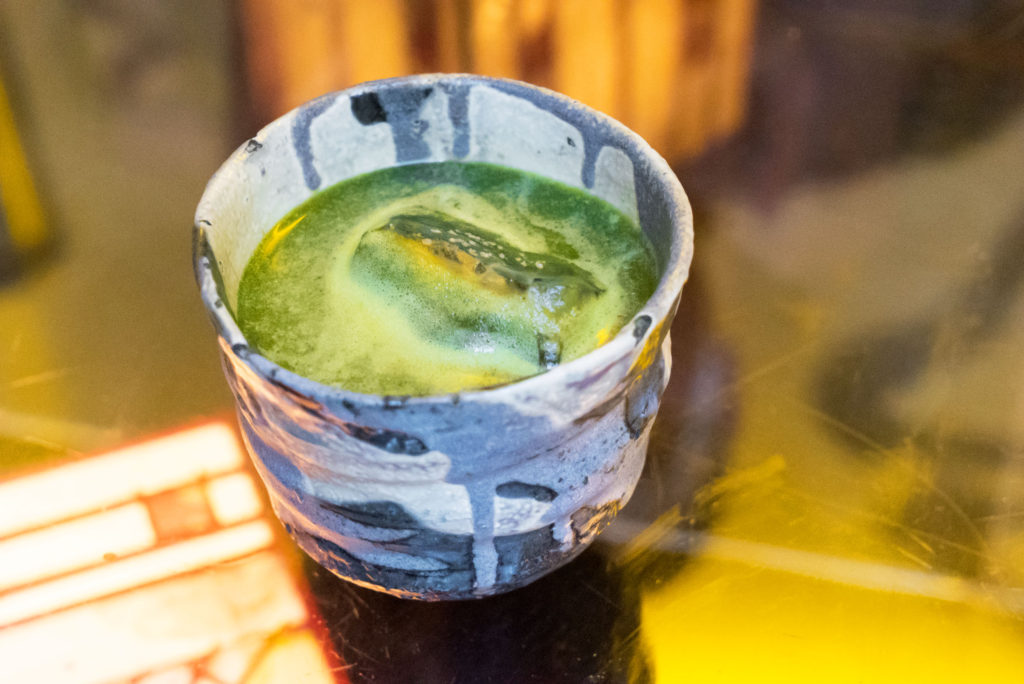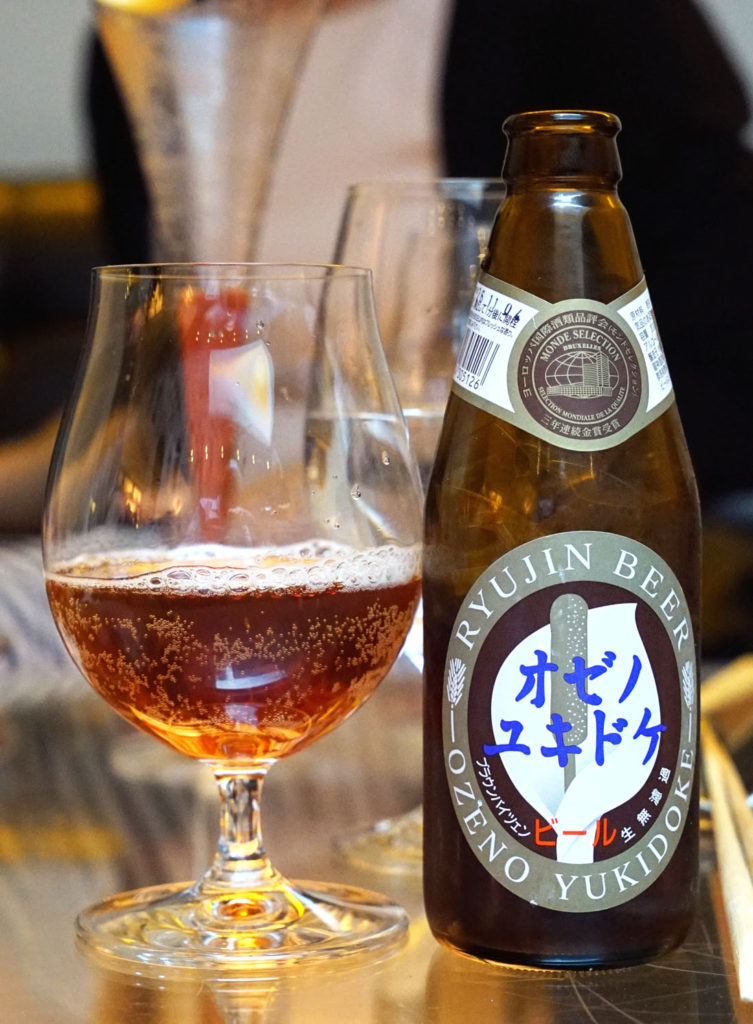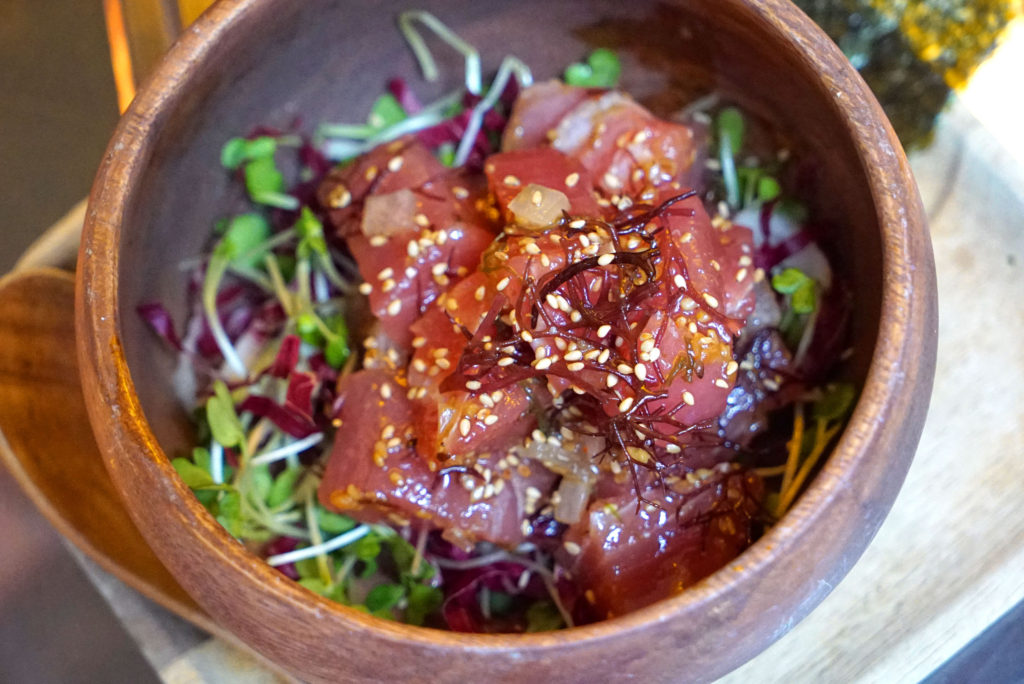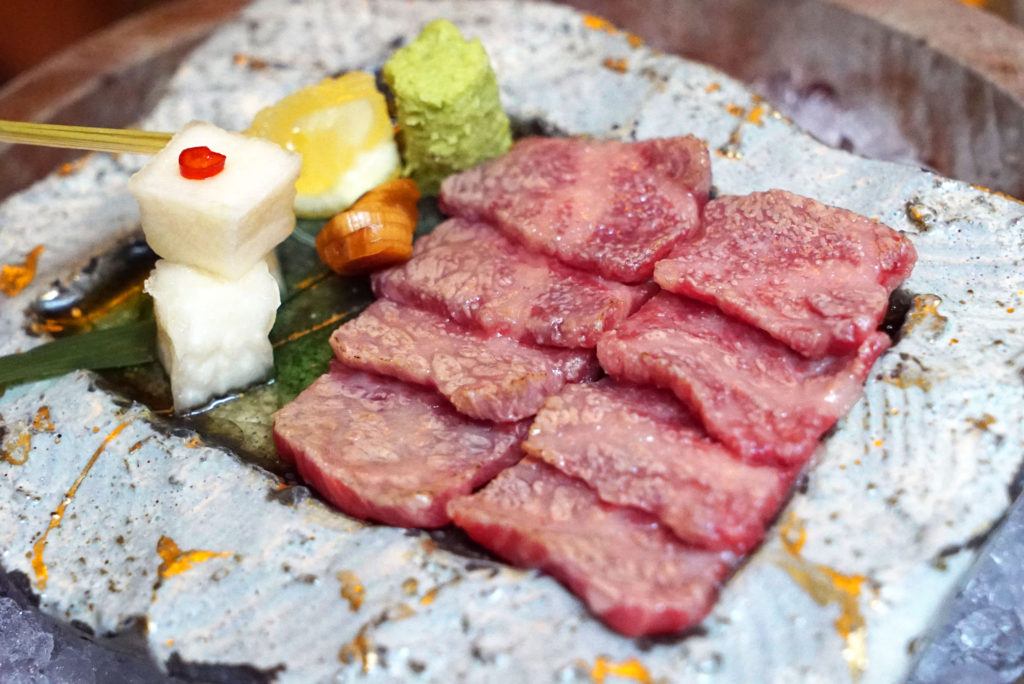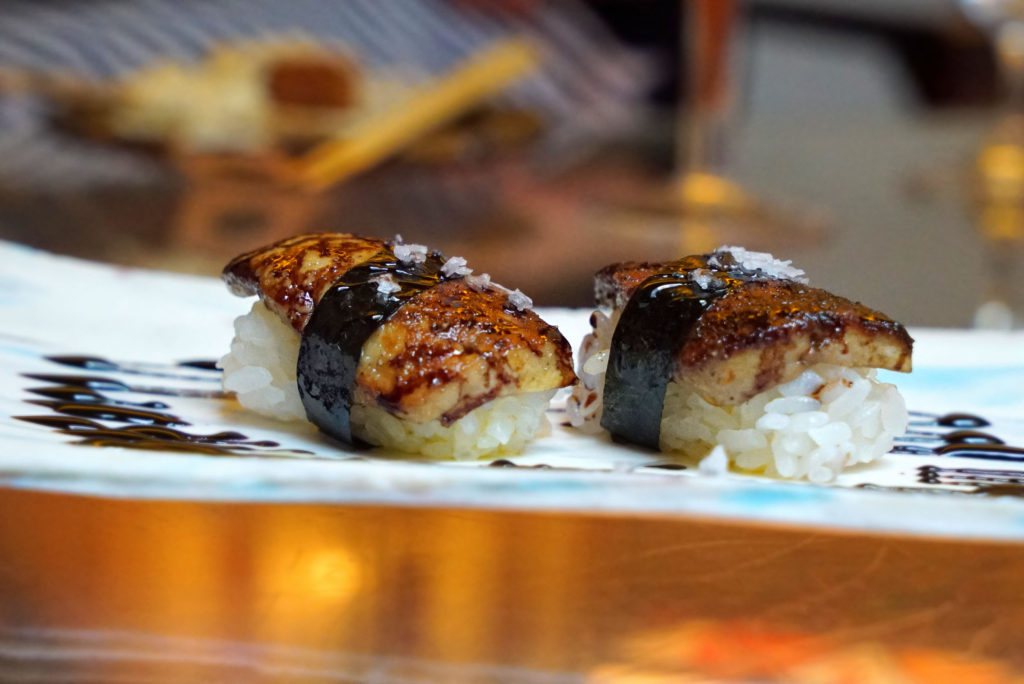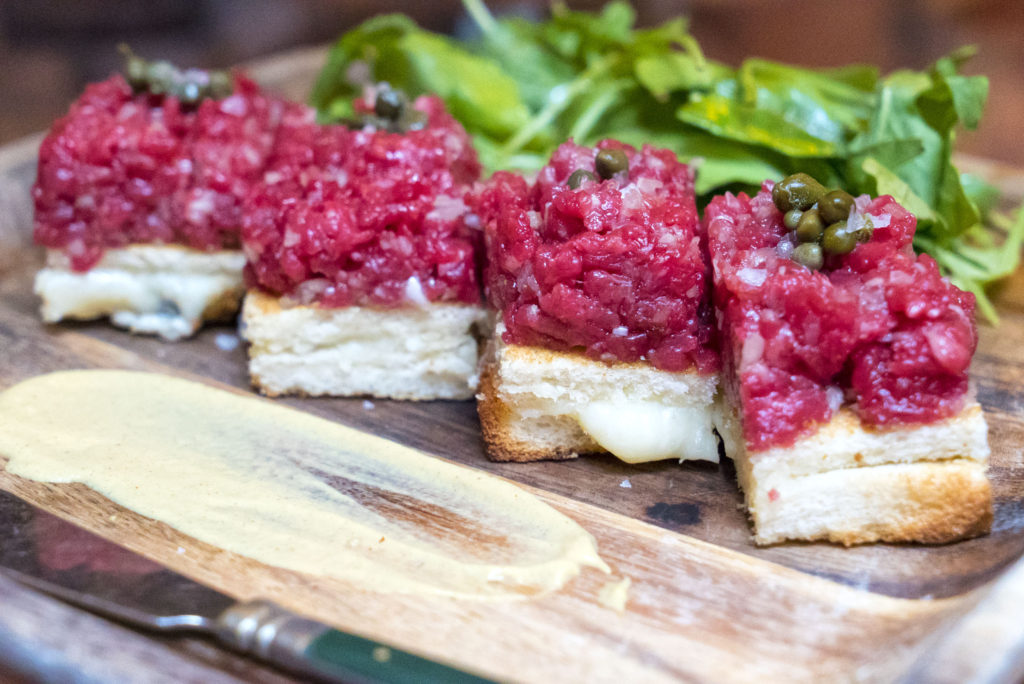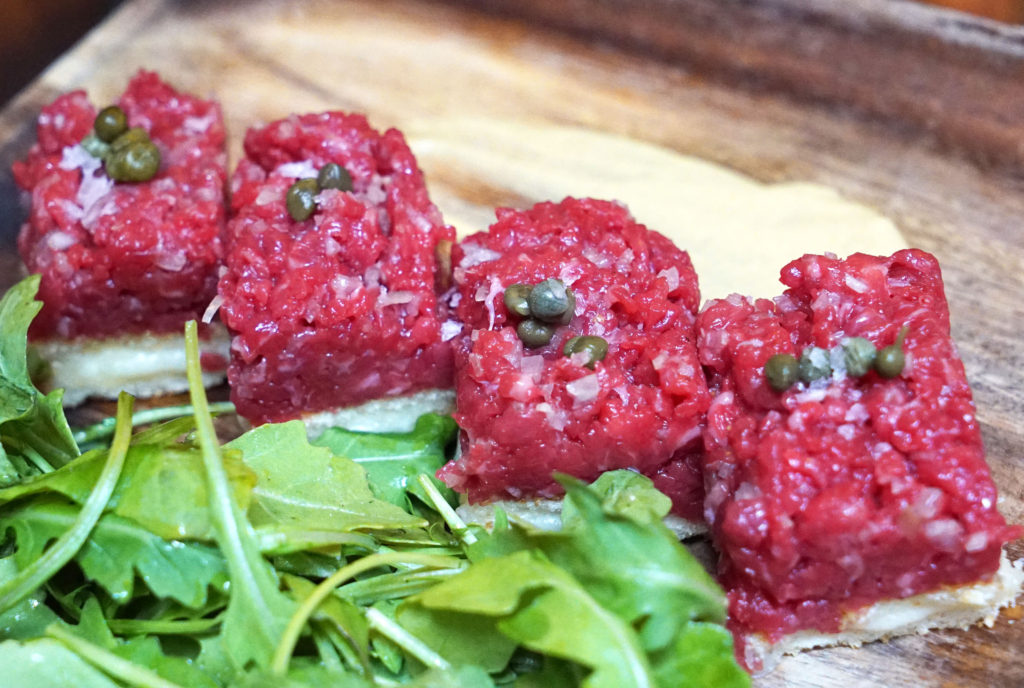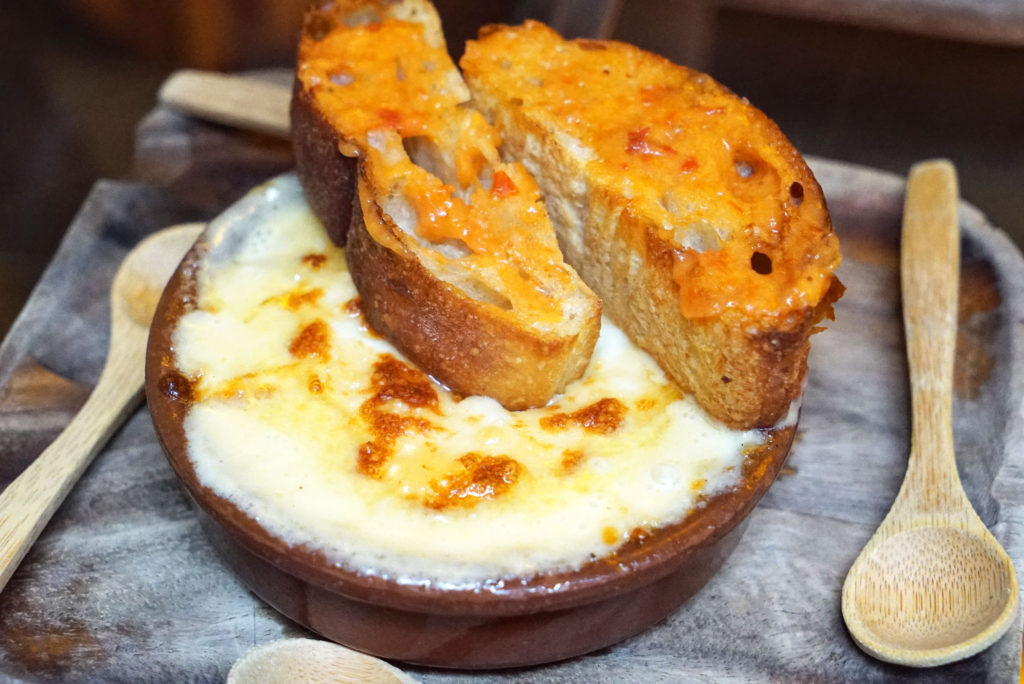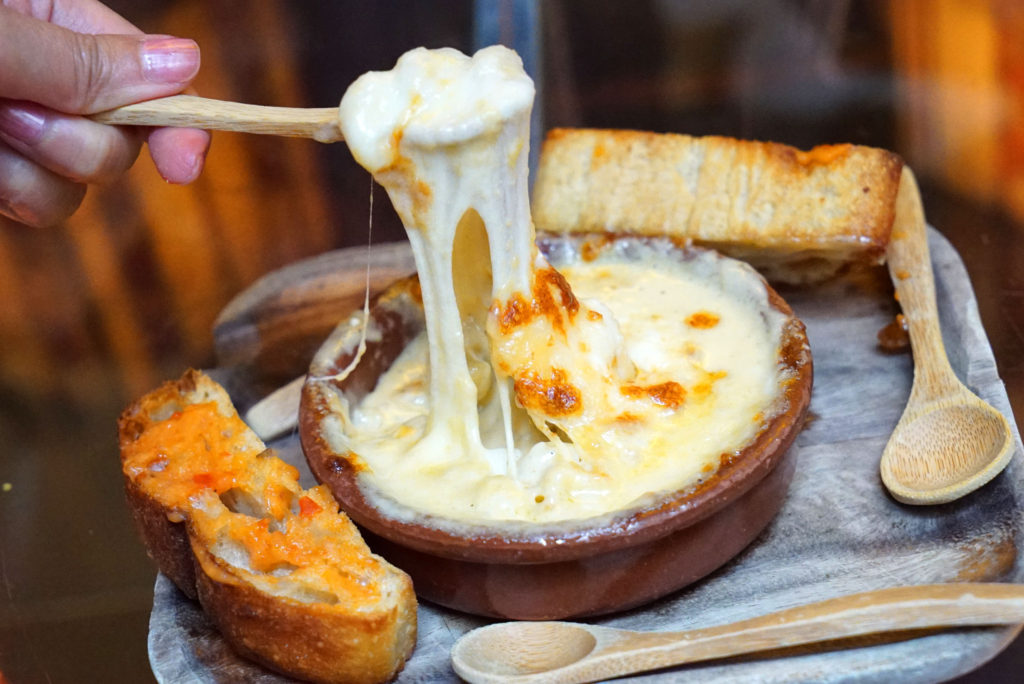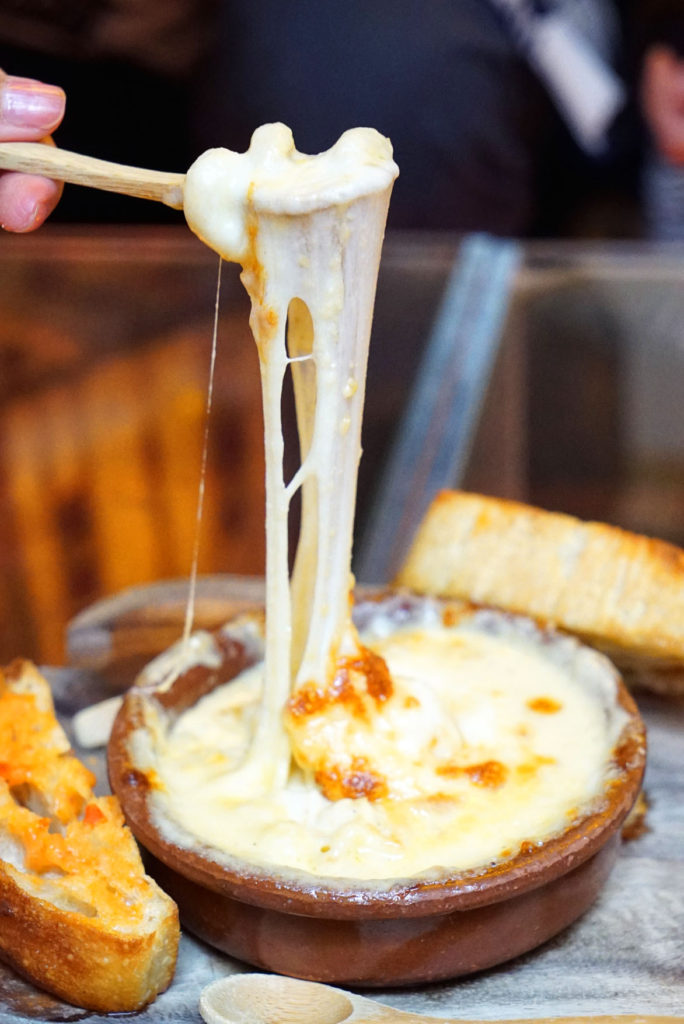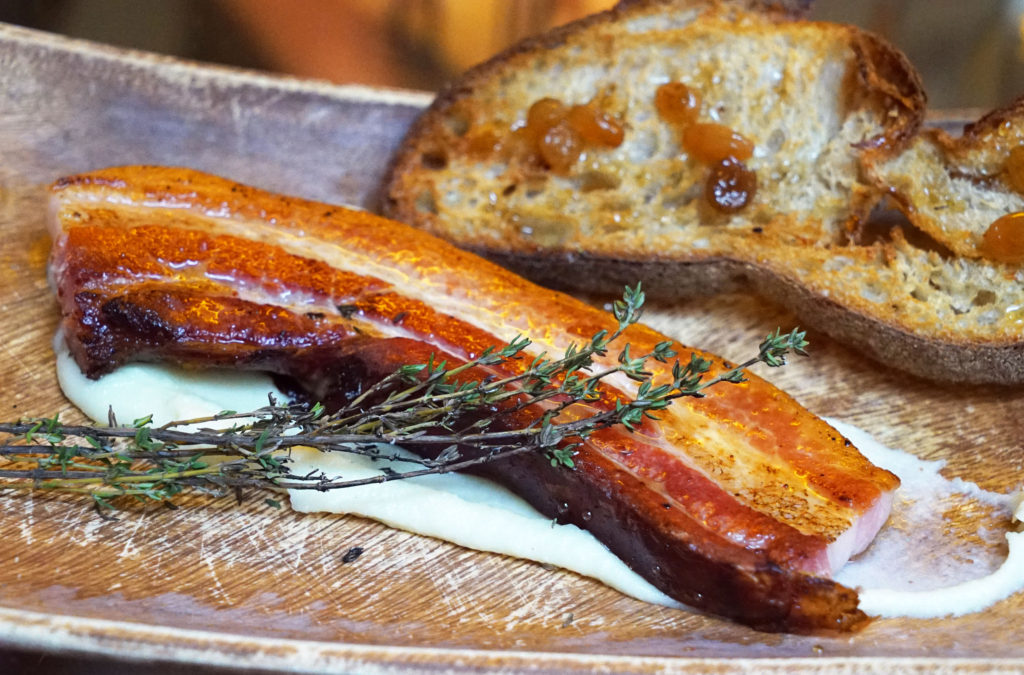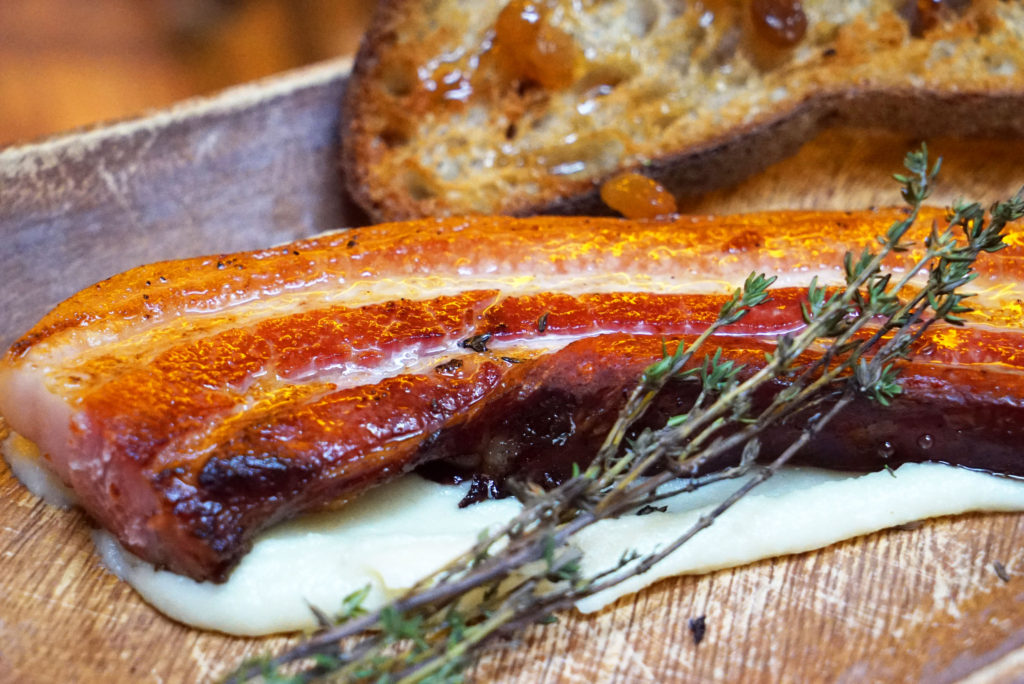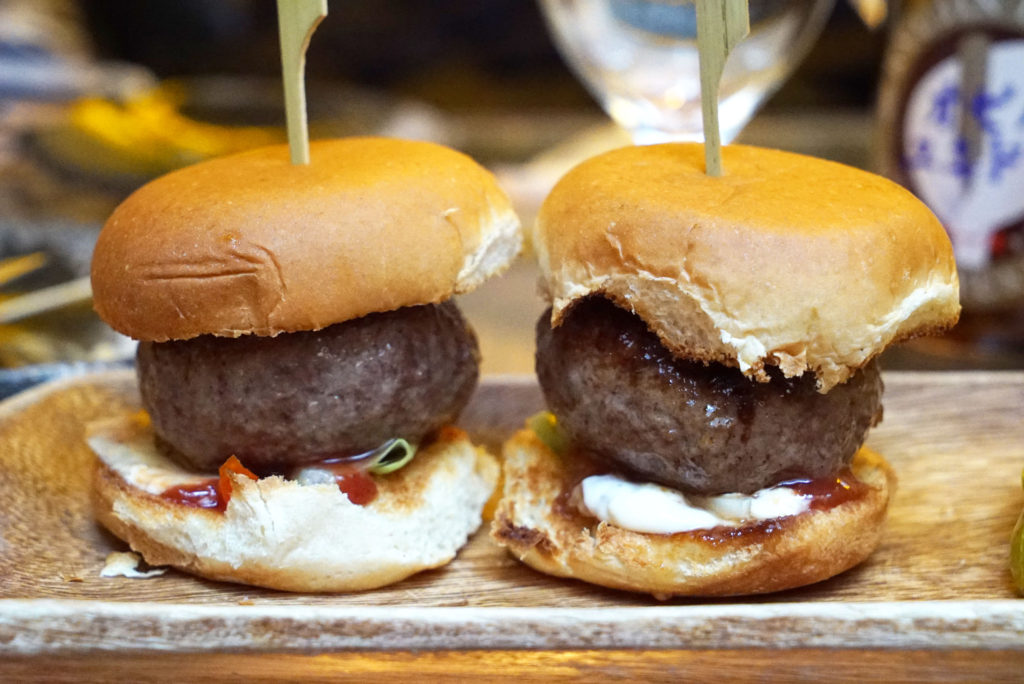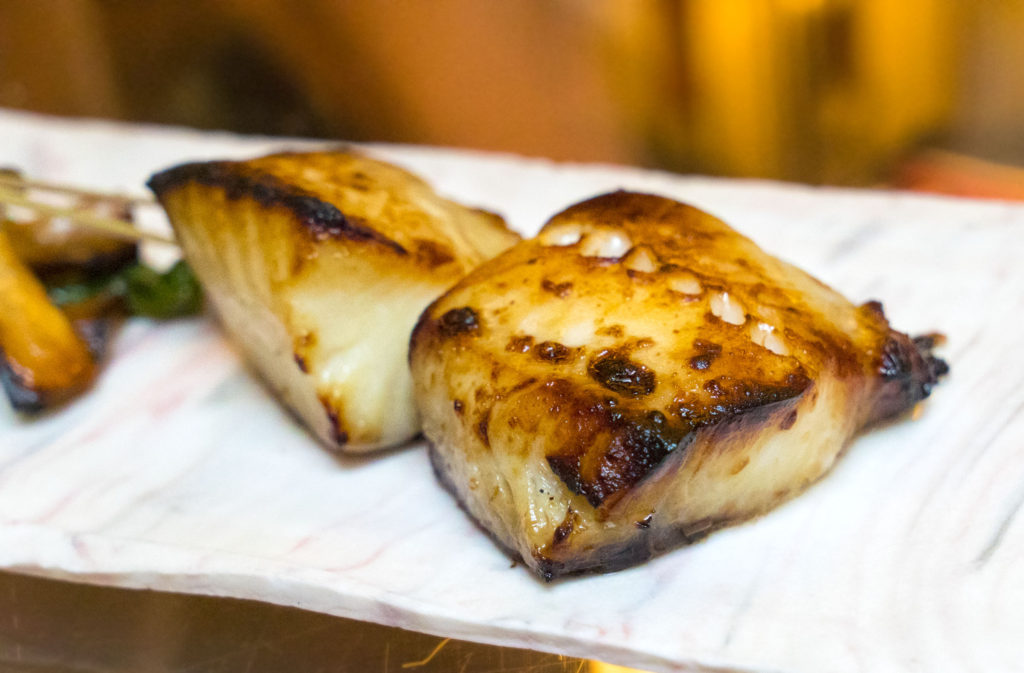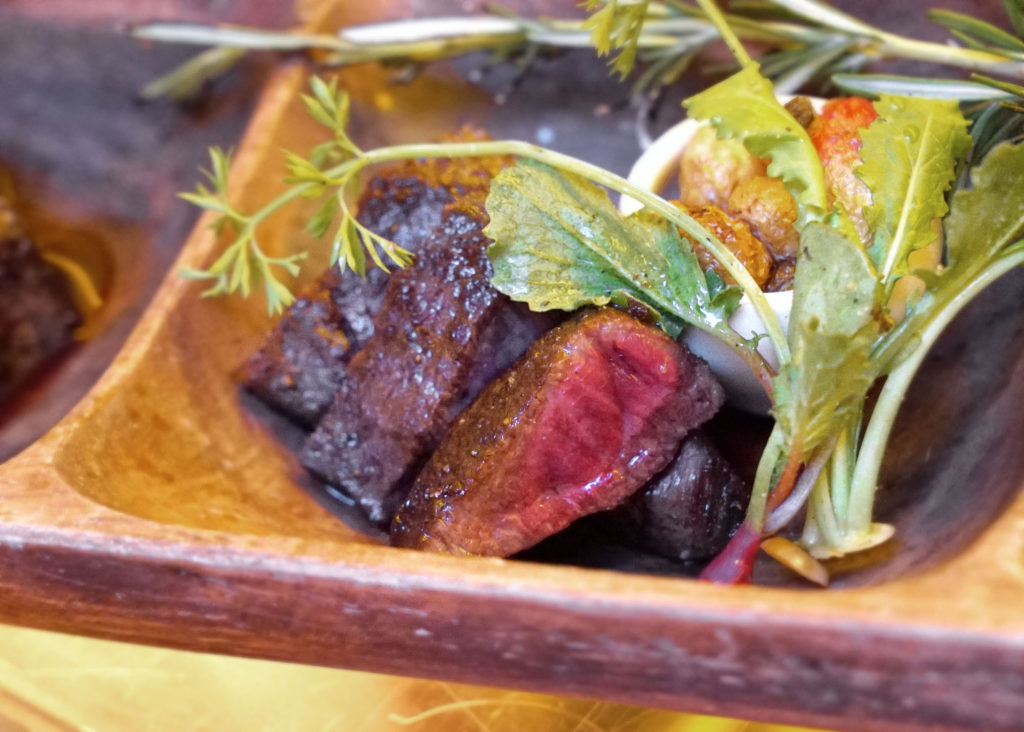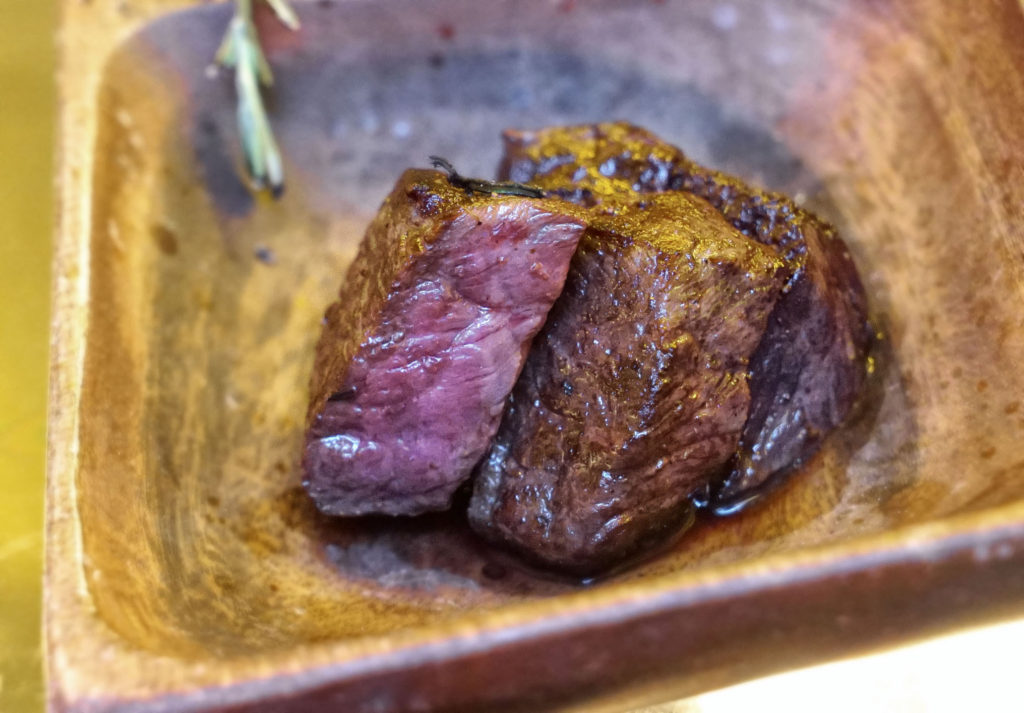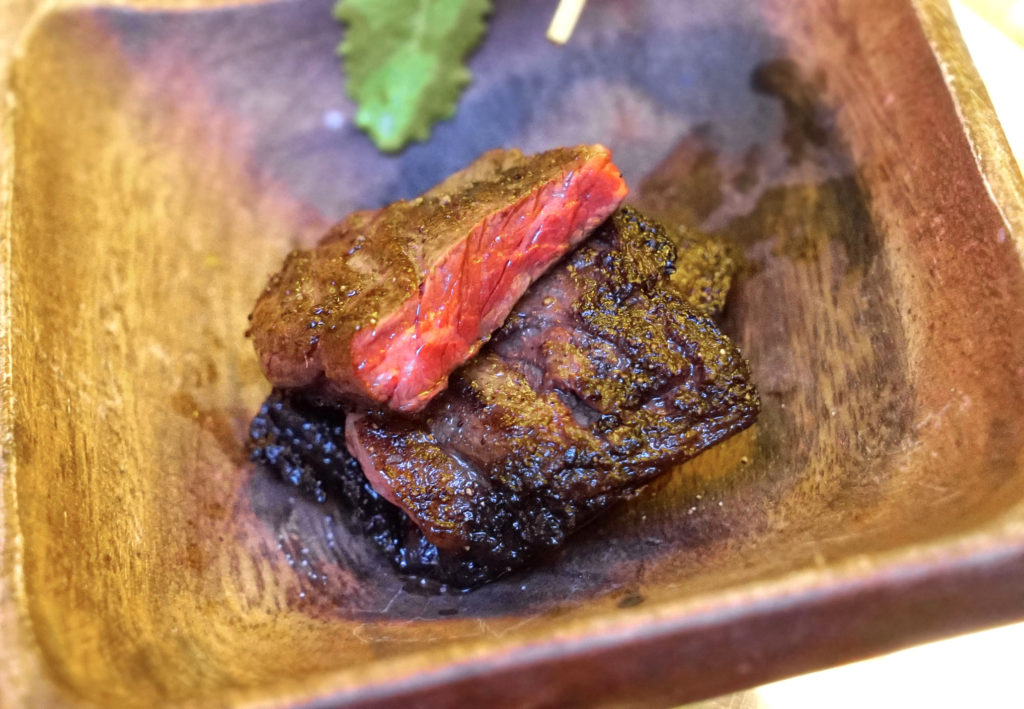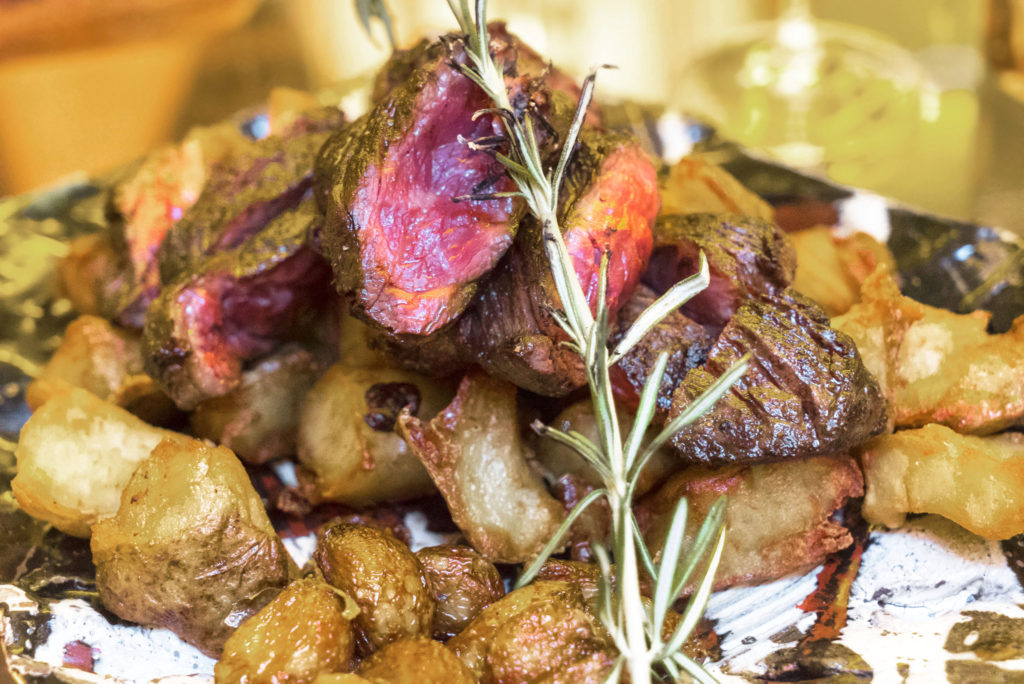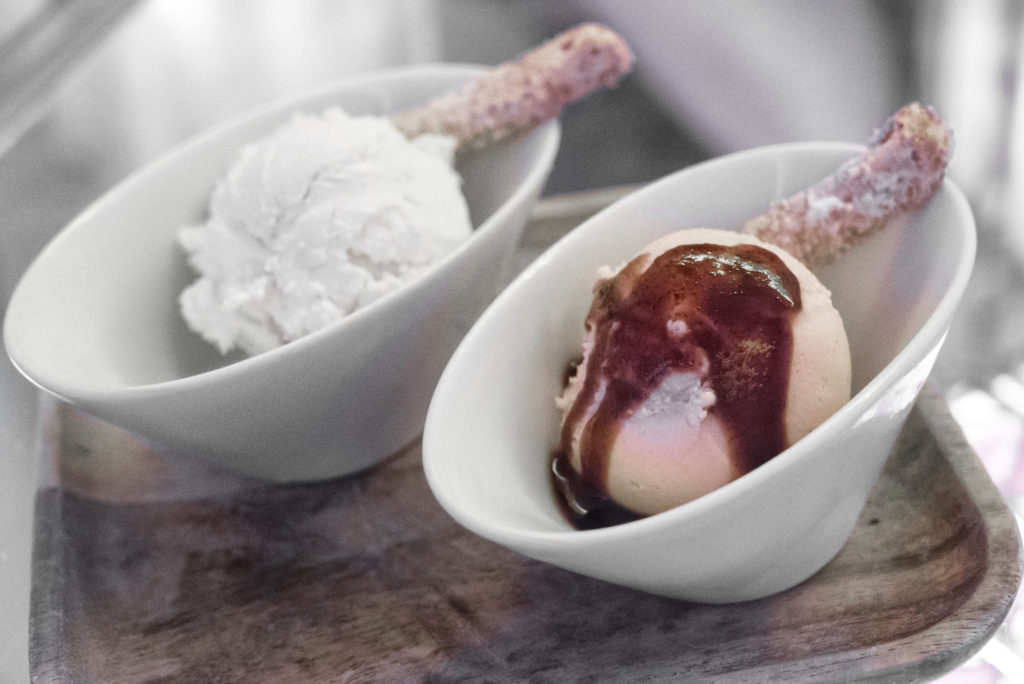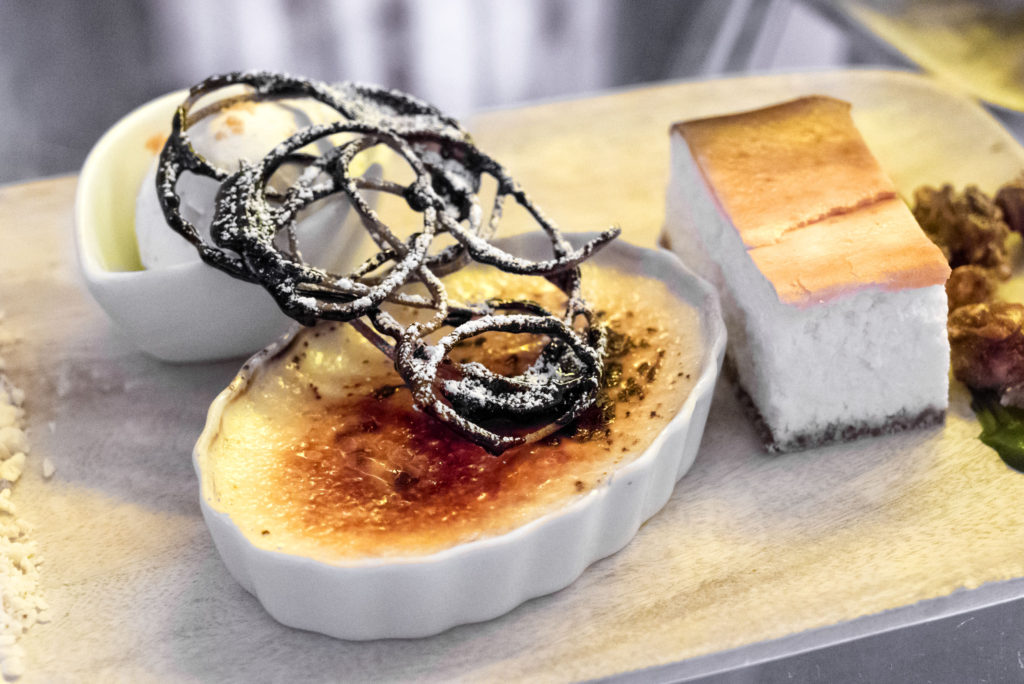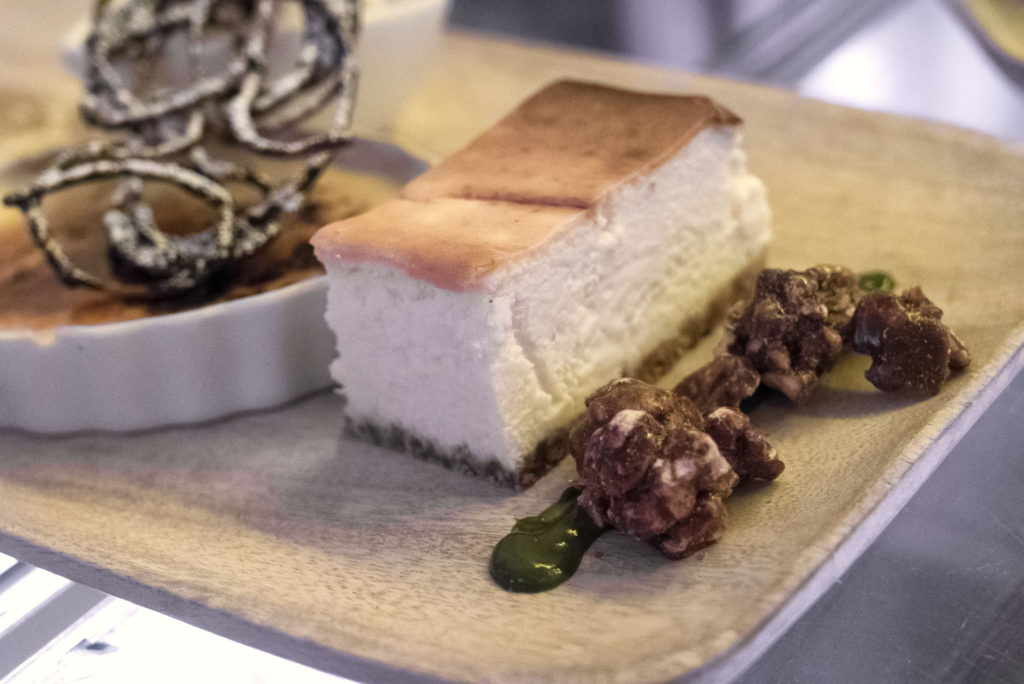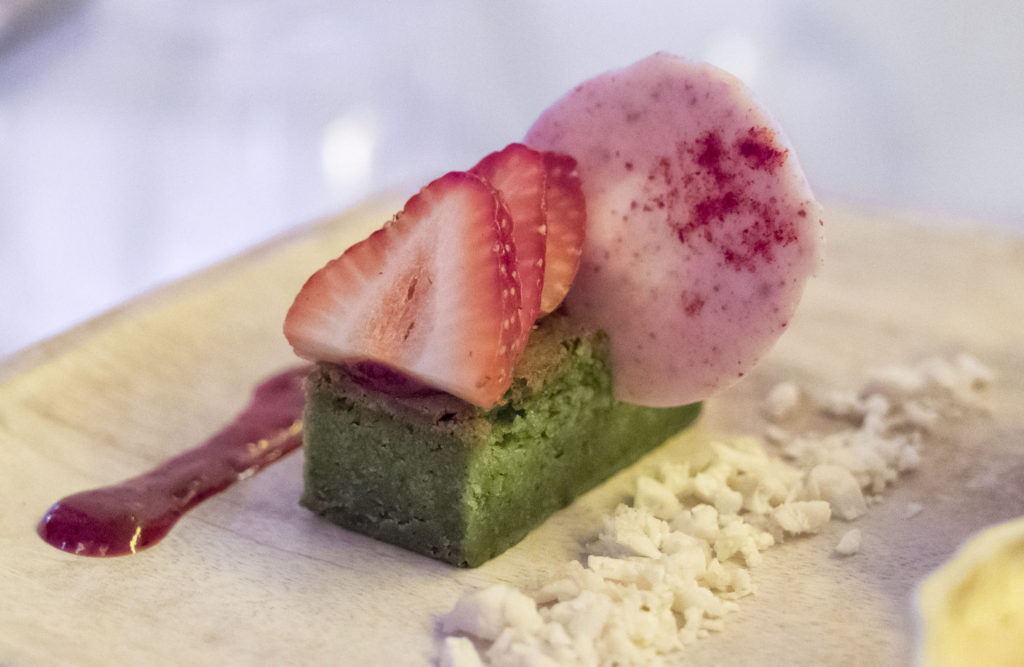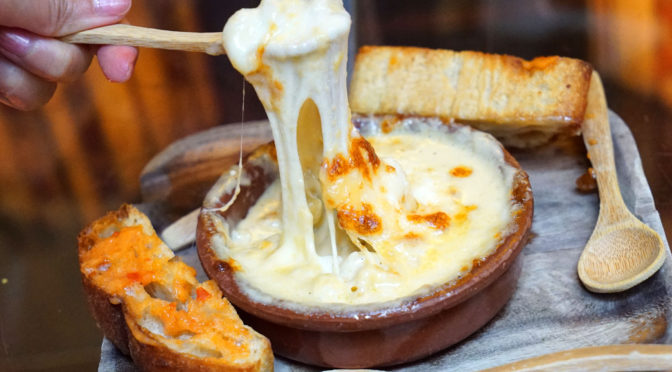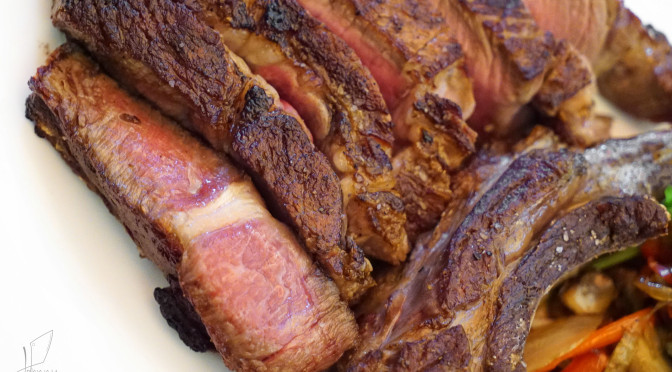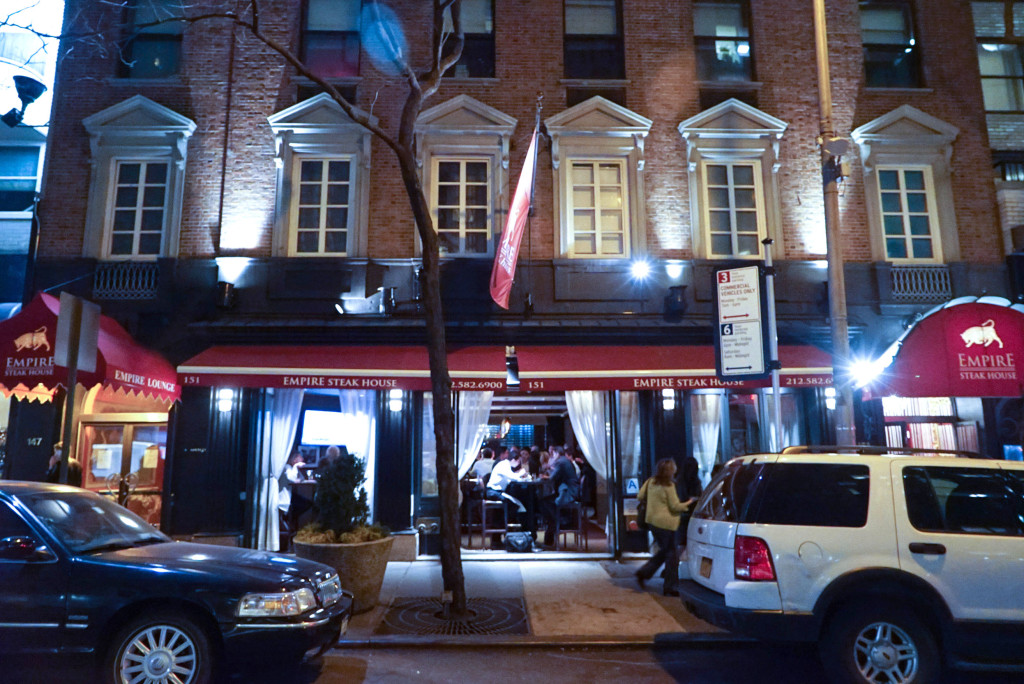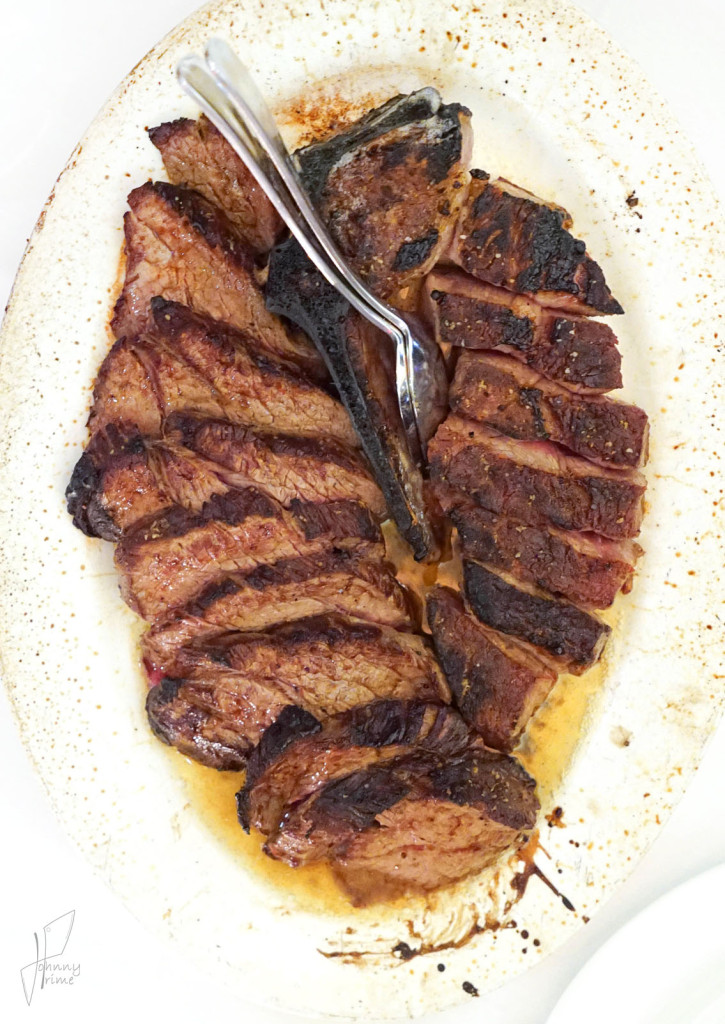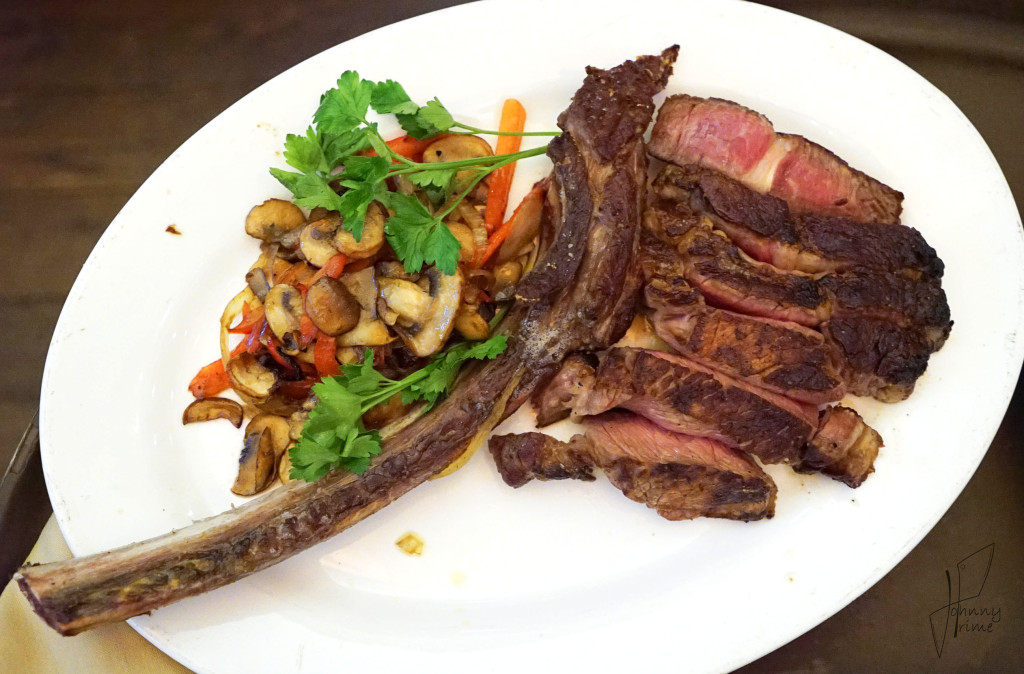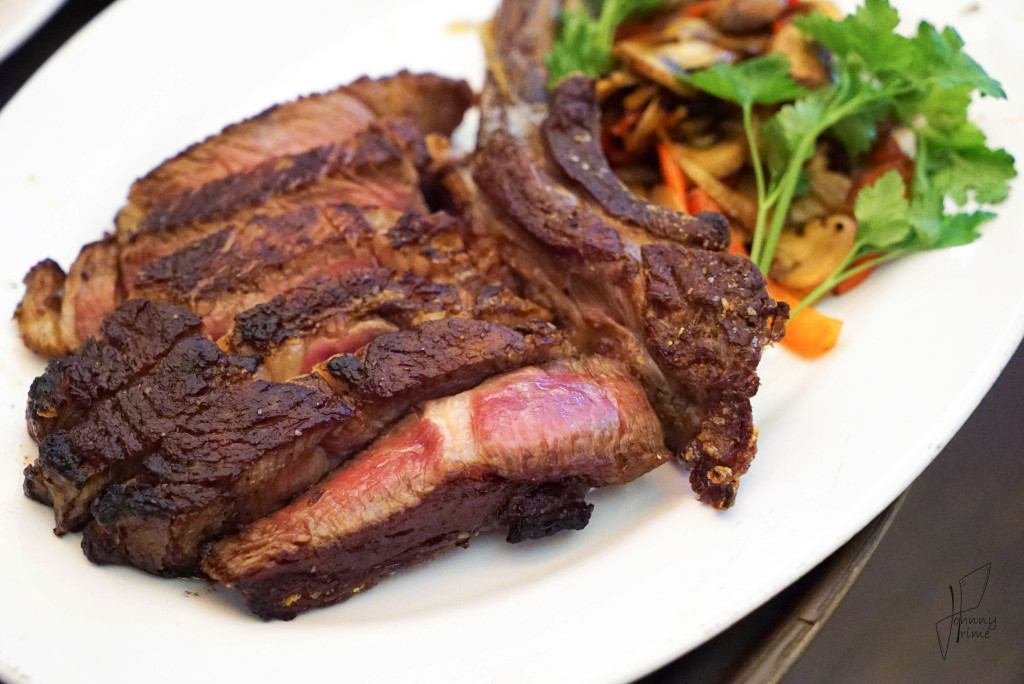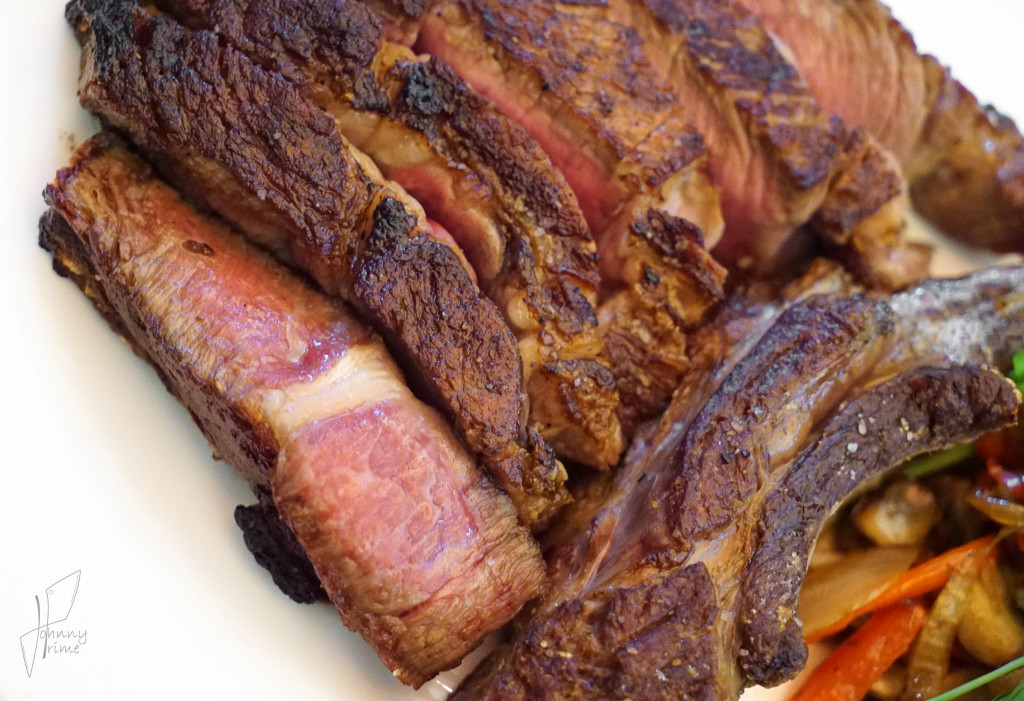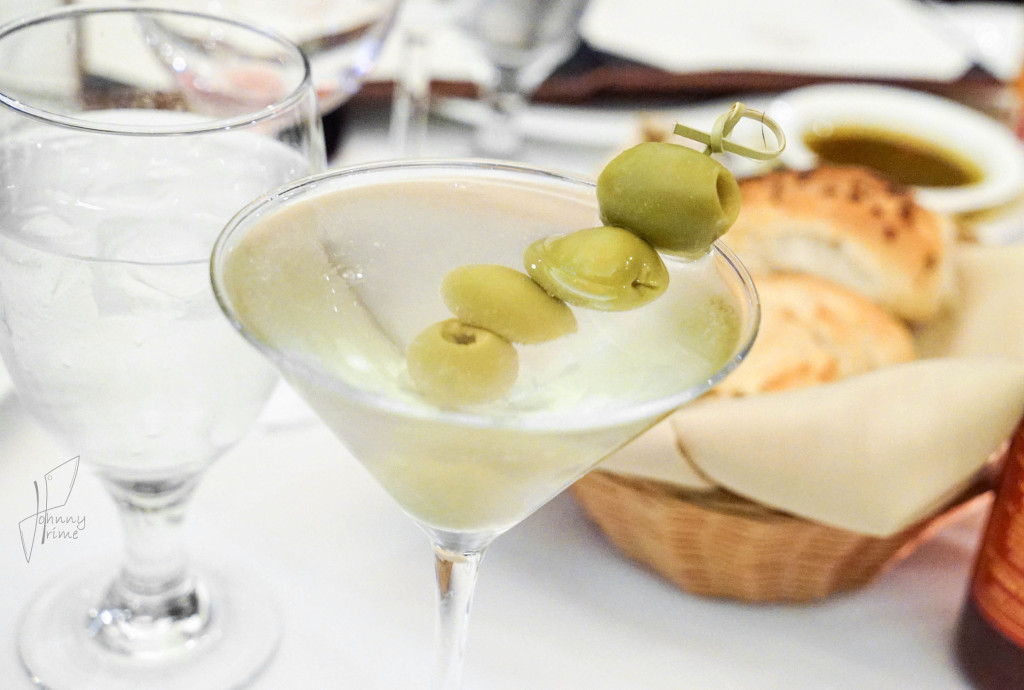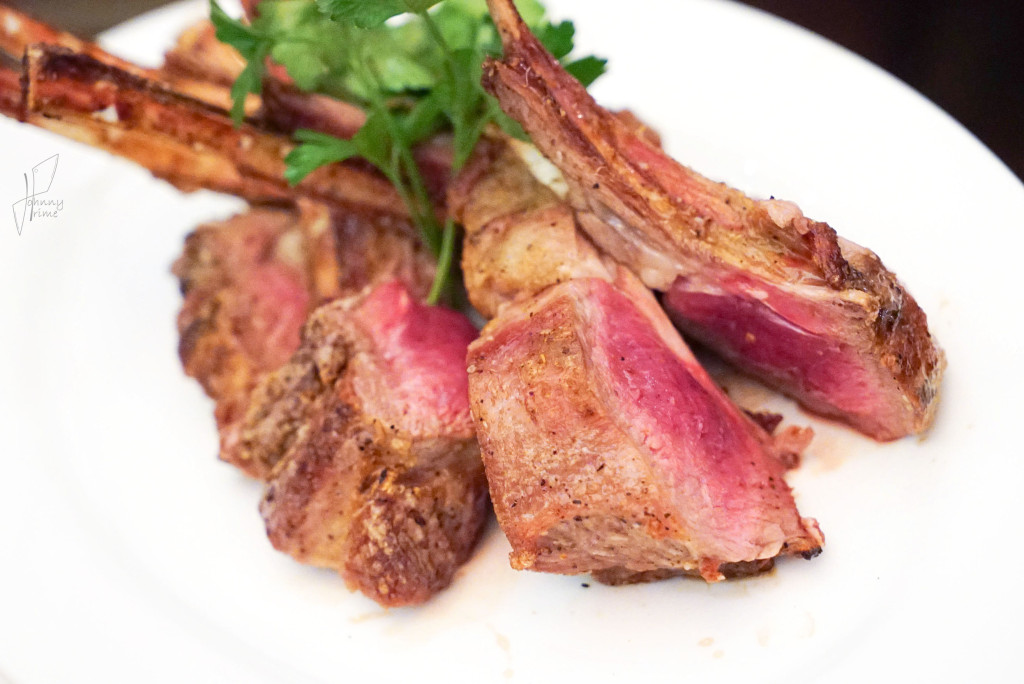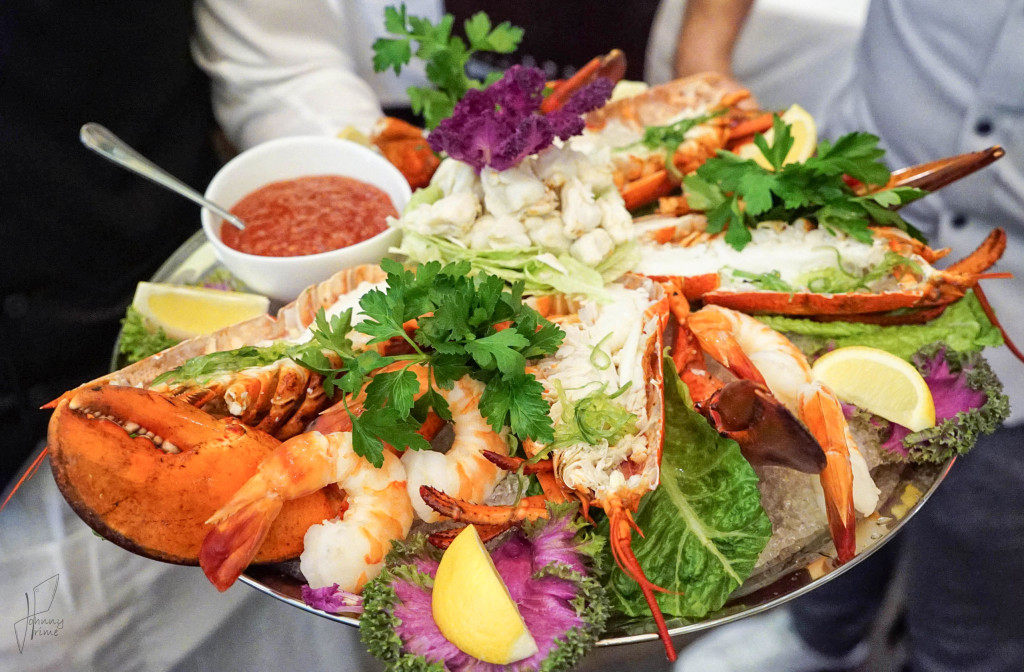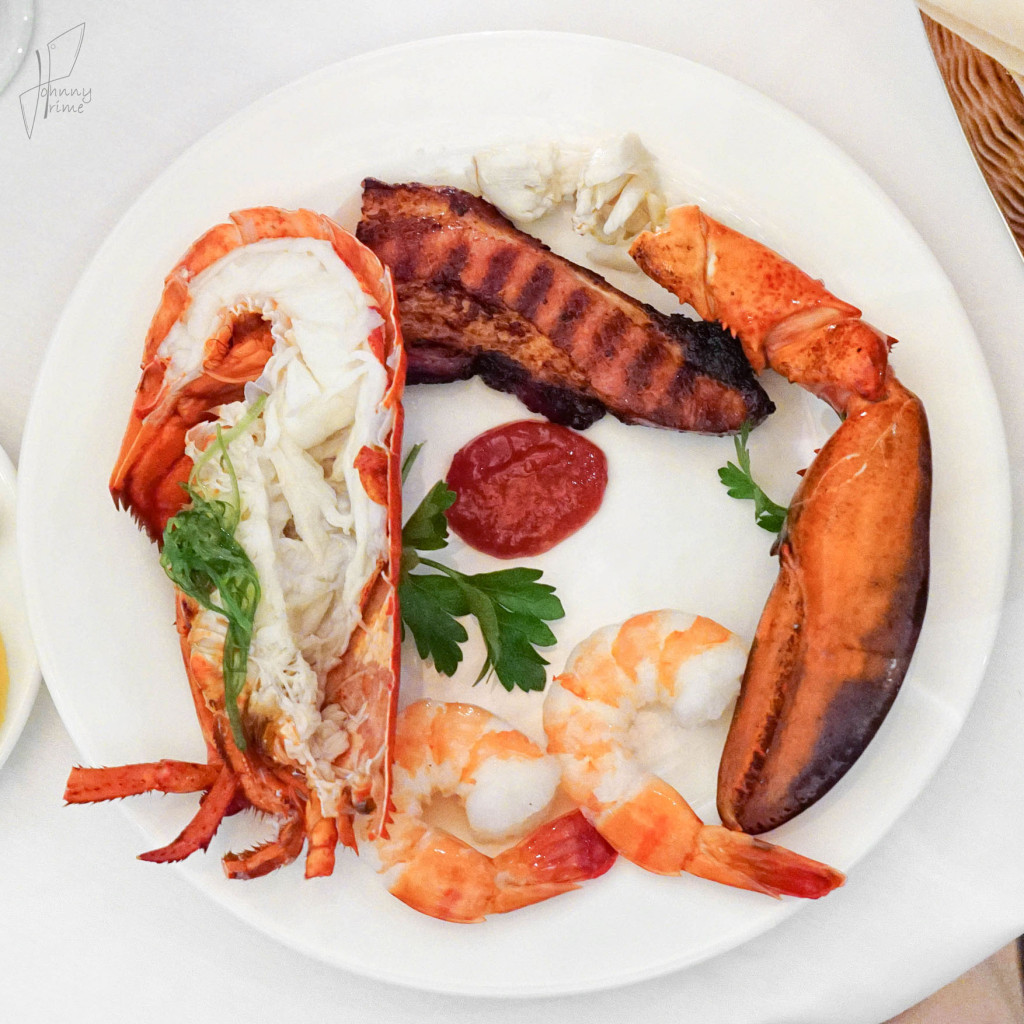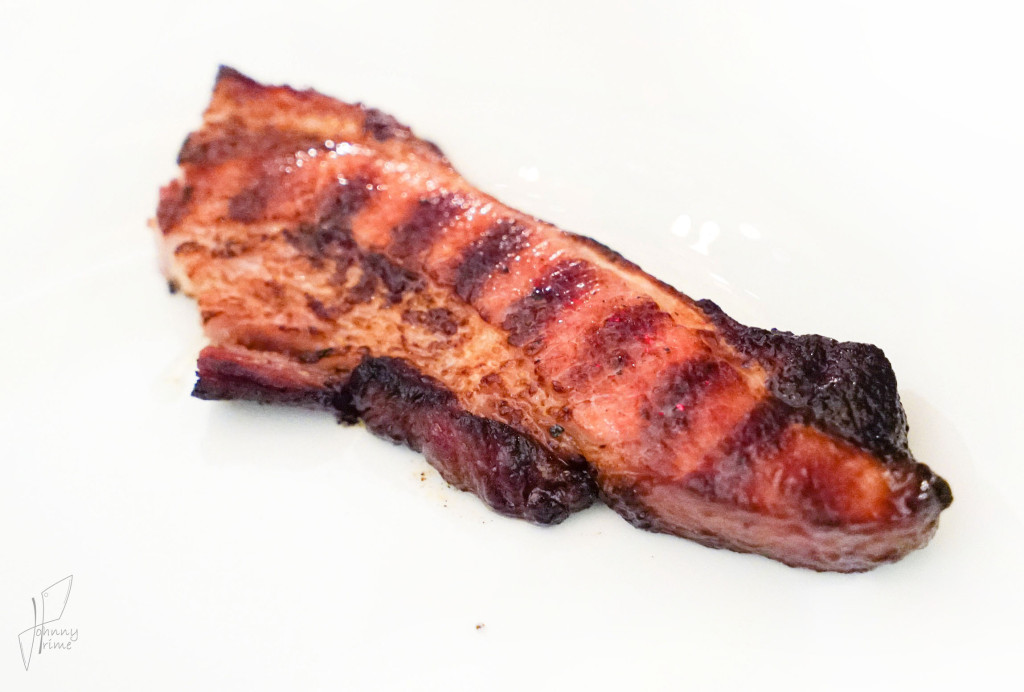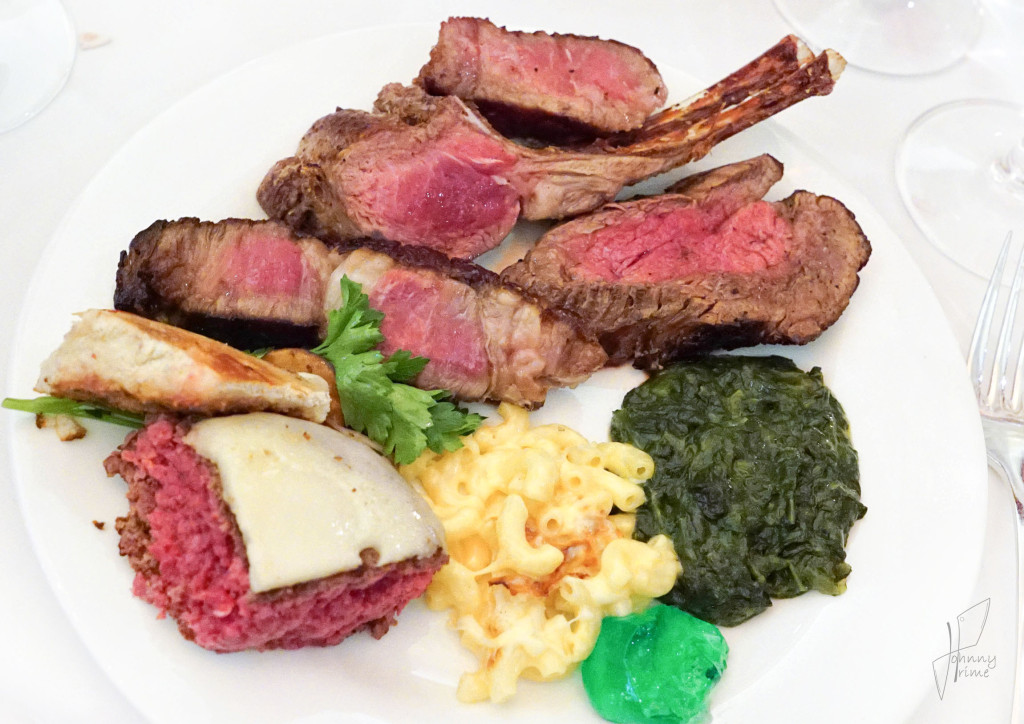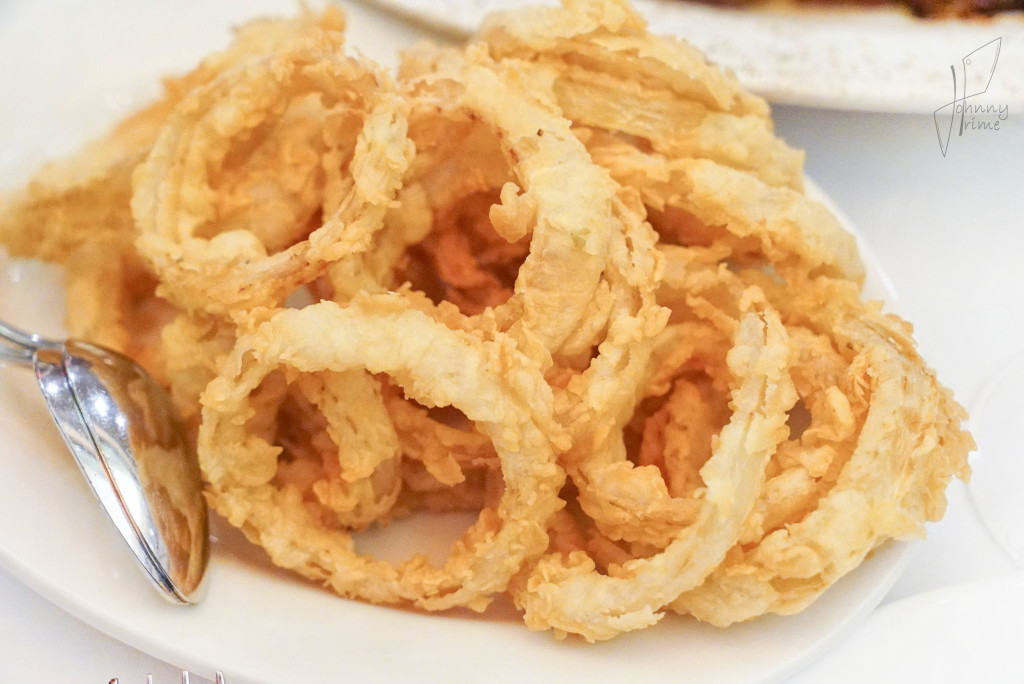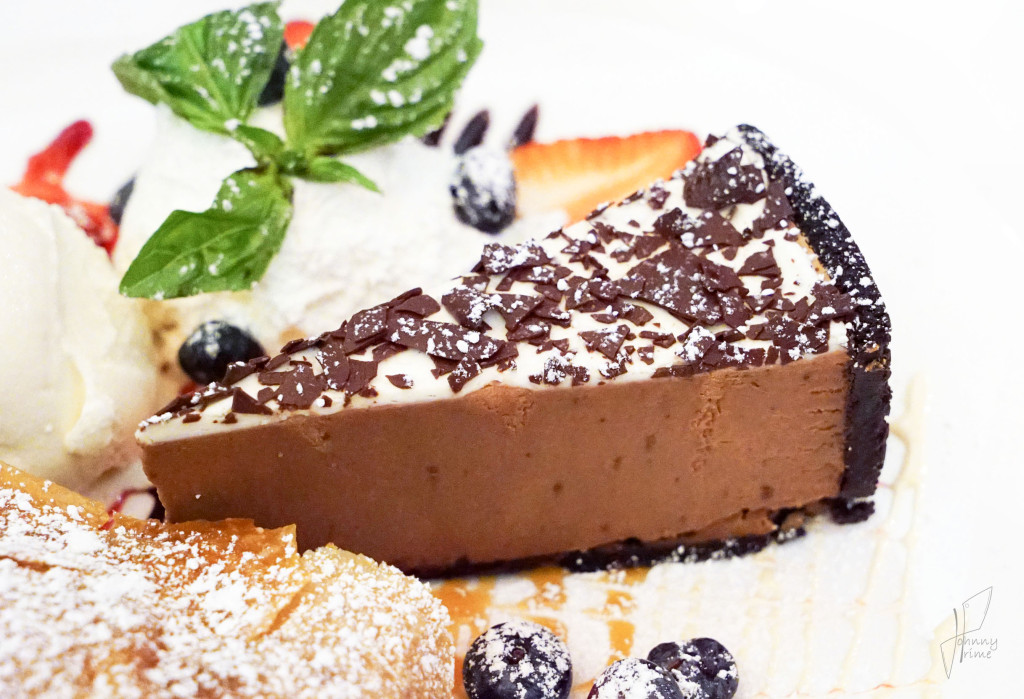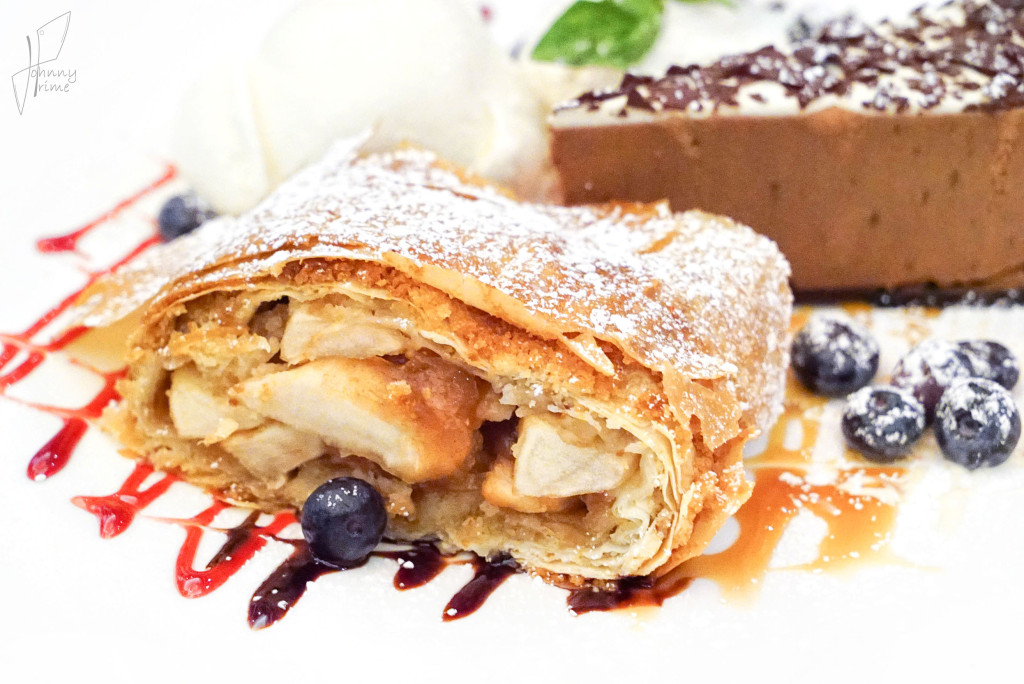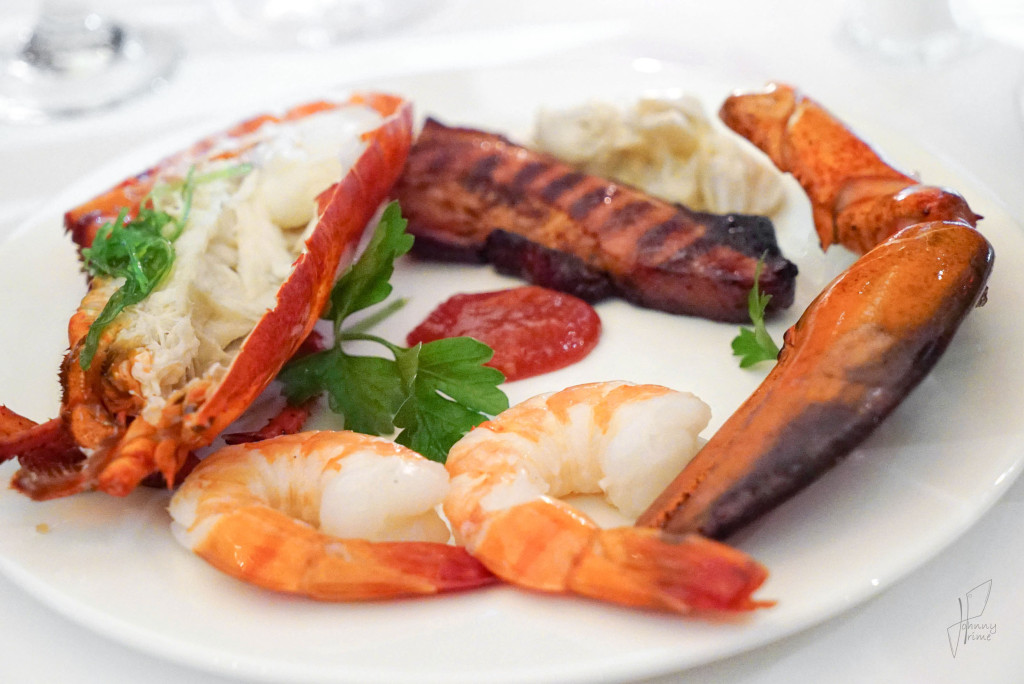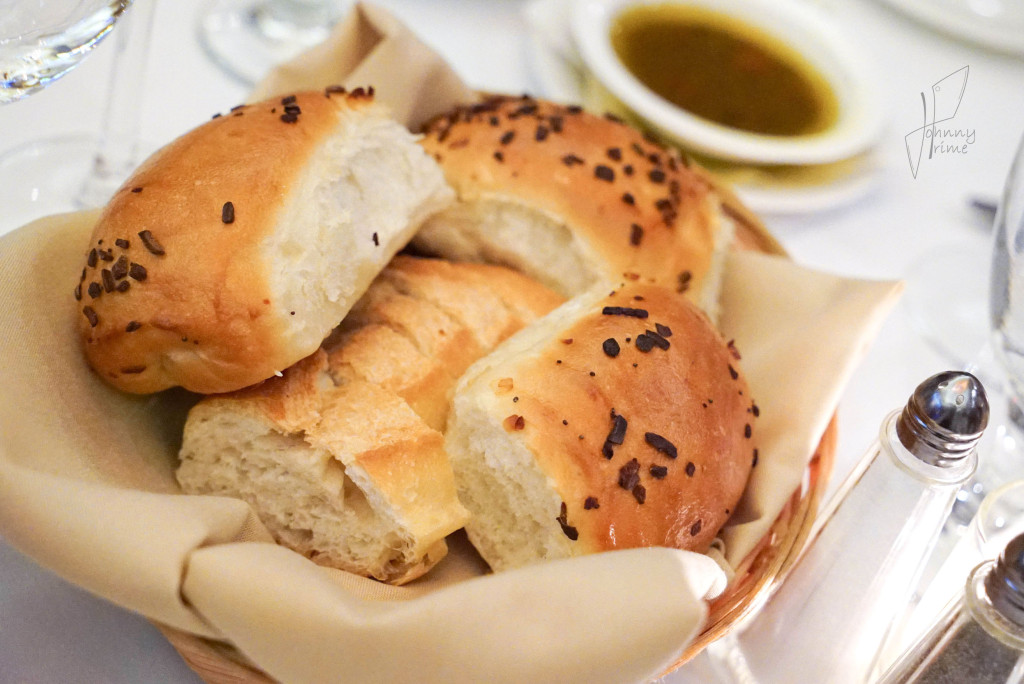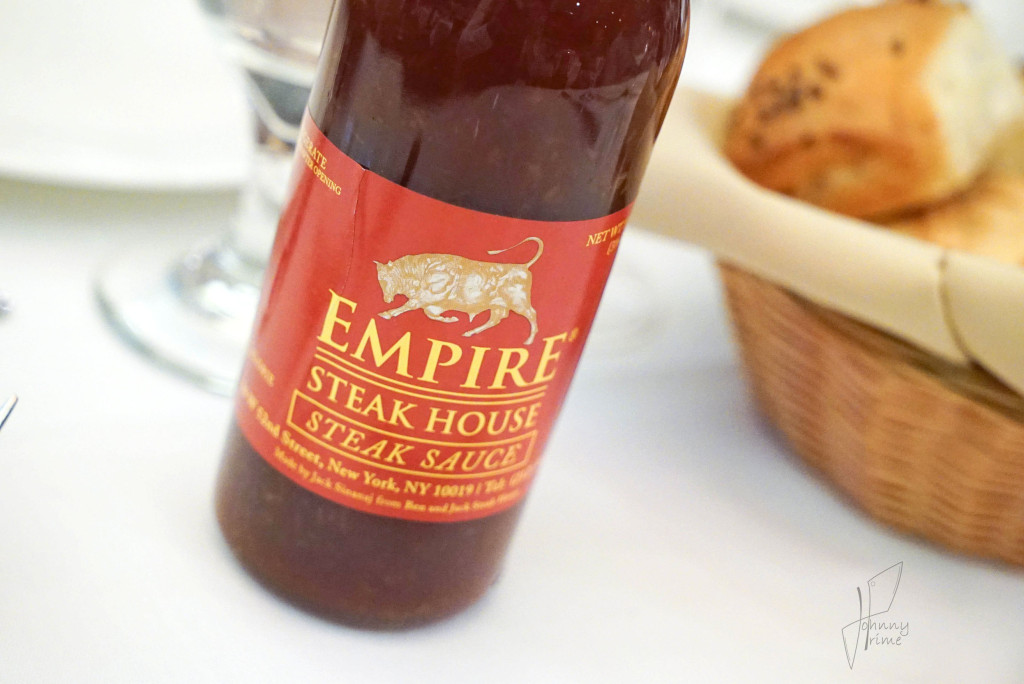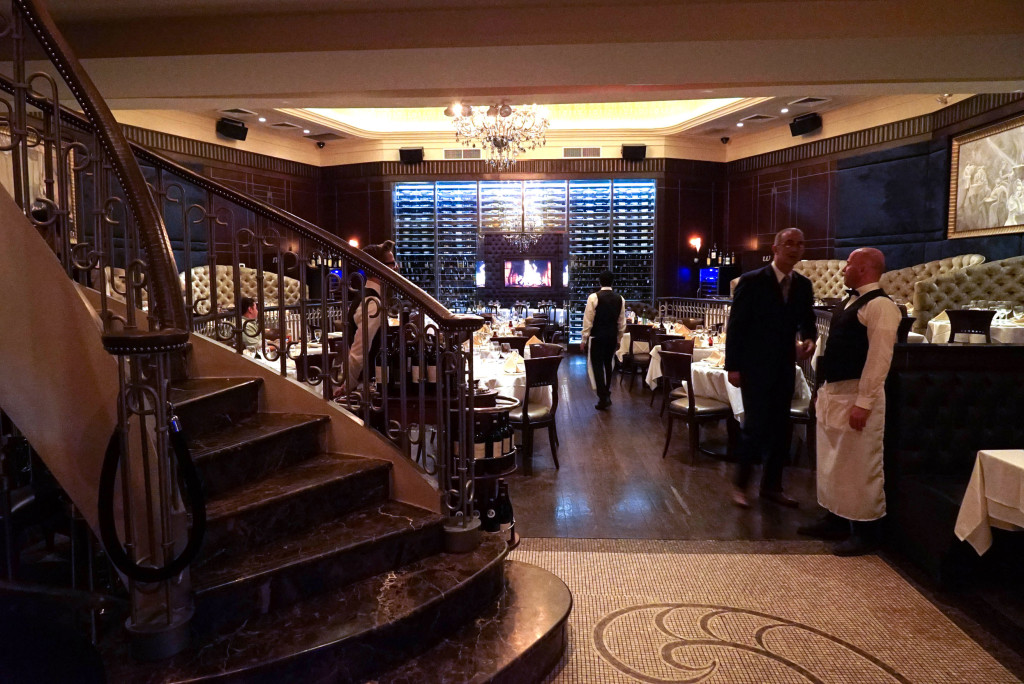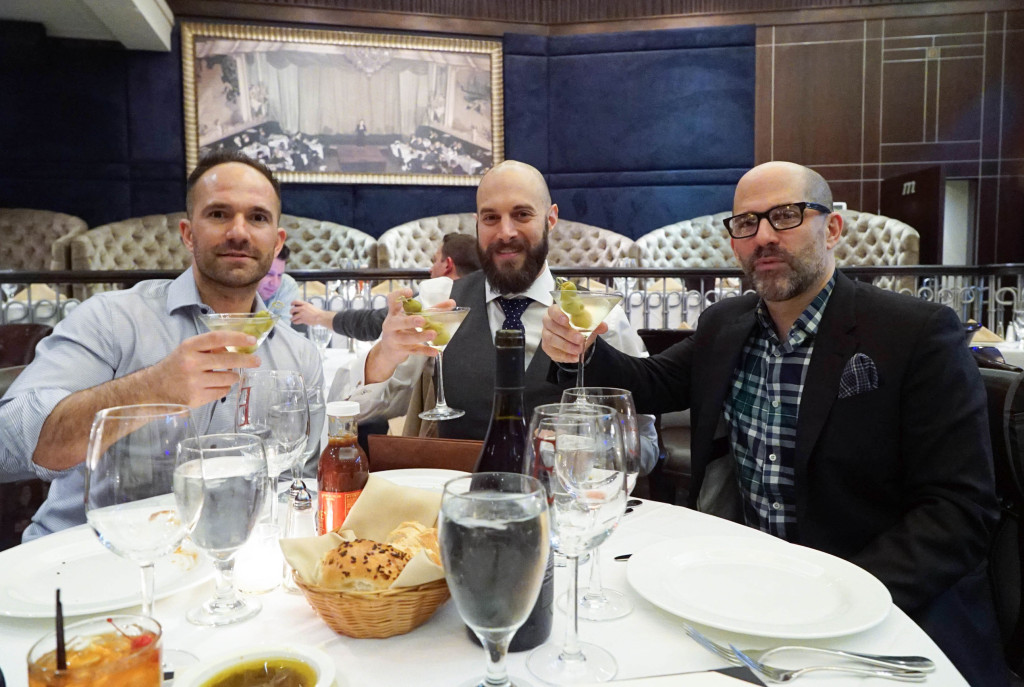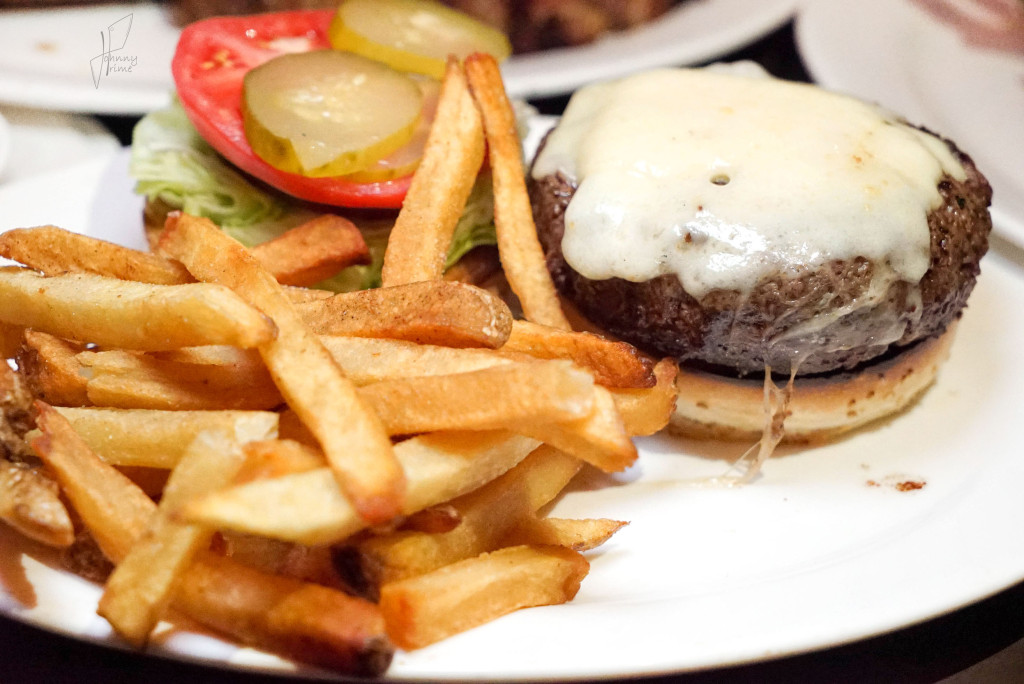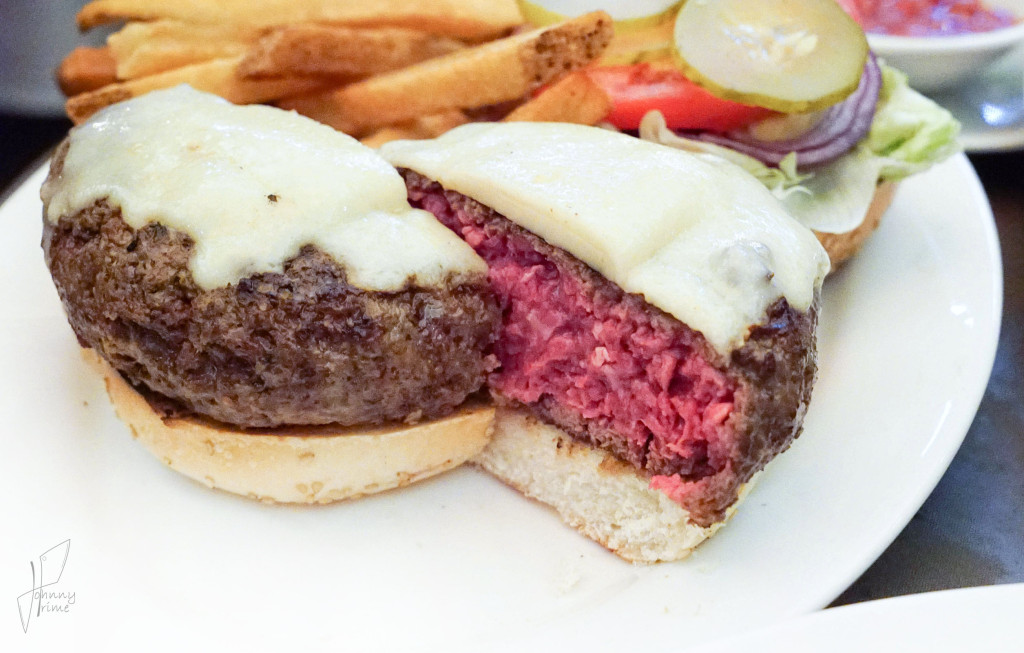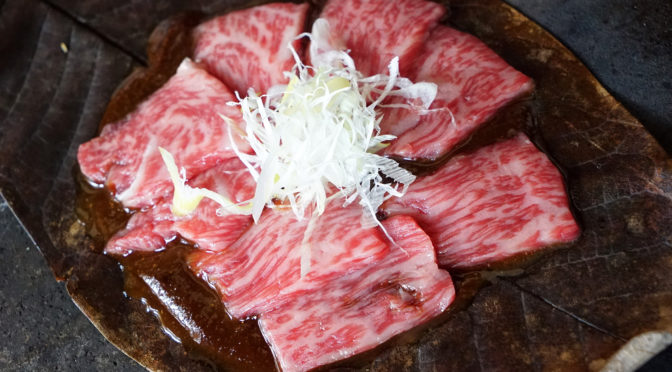Most people usually associate the word Wagyu with insanely jacked-up prices, so high that they make your asshole pucker up tighter than a virgin’s snatch on prom night. Well here’s a quick low-down on the delicious shit:
Wagyu is a compound word of sorts. Wa means Japan, and gyu means beef. Hence, beef that hails from Japan. In the beef world it’s a term used when referring to four Japanese breeds of cattle that are genetically predisposed to intense marbling in their muscles. The four breeds of cattle are Black, Brown/Red, Polled and Shorthorn.
Until recently, Japanese beef was not imported into the United States, so any time you saw Wagyu on a restaurant menu, it was either a lie or an incomplete description. It was most likely beef from either an Australian or American hybrid Wagyu cross-breed animal.
Hybrid beef isn’t something that should be frowned upon. Many of the Wagyu cross-breeding programs produce excellent, highly marbled beef that strikes a nice balance between the traditional, robustly beefy flavors of the United States and that buttery-soft, intensely marbled Japanese stuff (which eats more like foie gras or some other protein, different from what we usually think of when we eat beef).
Lots of people get their panties in a bunch when you call the cross-bred stuff Wagyu, even at levels of full blood and purebred. They tend to confuse the literal translation of the word Wagyu (Japan beef) with the breed of cattle that the word represents.
The Wagyu breed is not and should not be region specific. Just as Angus did not cease to be Angus when it was imported from Scotland to the United States in the 1800’s, Wagyu does not cease to be Wagyu when it moves abroad. Both breeds are named for the locations where they originated.
In fact, almost every major European cattle breed was named after the location where it originated. Does that mean the ones that are raised in America should be called something else? No! We don’t call a German Shepherd an American Shepherd just because the breeder operates in New York. We don’t do that even when the animal isn’t purebred! So why treat Wagyu differently? It’s stupid.
On the flip side, the Wagyu breeds should not be confused or conflated with something like Kobe beef, which has some strict parameters to its regional product branding. That’s right, it’s a brand.
Kobe Beef
What exactly is Kobe beef? The easiest way to think about Kobe beef is to liken it to Champagne. To be called Champagne, the bottle has to be from the Champagne region of France, otherwise it’s just “sparkling wine.” The same logic applies to Kobe beef.
Under Japanese law, Kobe beef is a very specific product from a specific place, from one breed of cattle, with very strict rules. Kobe derives from a strain of the Japanese Black breed of Wagyu cattle known as Tajima. It’s said that the cattle are hand-fed using high-energy feed, including beer and beer mash, to ensure tenderness and high fat content. Basically, they’re grain-fed. The cattle are also apparently hand-massaged to reduce stress. I guess it’s only fair to pamper these beautiful beasts if we’re going to slice them up and grill them!
Note that real Kobe beef is typically not readily or easily available in the United States, so if you see it on a menu, understand that it may likely be a knock off (though probably still very good) from a place other than the Kobe region of Japan. As of the time of this book writing, there are only about nine places on America’s east coast that sell legit Kobe beef.
Other Regions of Japan
Several other regions of Japan have also branded themselves as beef specialty production zones similar to Kobe. Miyazaki produces some excellent beef, and beef from this prefecture is more commonly seen at high-end steakhouses and Japanese restaurants here in the United States. Matsusaka in Mie, Japan and Hida in Gifu, Japan are other areas that produce similarly outstanding beef. Both of them are harvesting Japanese black breeds of Wagyu, and holding the final product to rigorous quality standards.
Even Hokkaido has set itself apart with what is called “Snow Beef.” This product from the cold region of Hokkaido is said to be a unique expression of beef with intense flavor that can only be created in this rare environment. It’s said that the mountainous climate causes extra fat to develop in the animals, and that the cold weather lowers the melting point of their fat. This supposedly creates sweetness in the meat. I’ve tasted this stuff. It’s great, but I don’t know how much of that copy I believe. The purveyors from Japan are masterful at marketing their products.
Japanese Beef Marketing
People who love Japanese beef also love to talk about how the animals are given beer. “Drunk happy cows,” they say. They’re not drunk. They’re fed beer mash, which is likely just a waste byproduct from Japan’s booming beer-making businesses. We do the same here in the United States with whiskey mash byproducts.
Some producers in Japan are incorporating olives into the feed, and it makes for some deliciously enticing marketing campaigns. This is similar to how many United States beef producers incorporate different foodstuffs into their cattle feed depending on their localized and regional agriculture markets (almonds in California, sunflower seeds in New York, etc.). The Japanese are adept at marketing these feeding programs, and we could learn a thing or two from them.
Meat lovers here in the United States would go nuts for “almond-fed beef.” They’d be drunk with excitement for “whiskey beef.” Just imagine the wine pairings that could be had with beef that was fed different crushed wine grape varietal byproducts, which would’ve otherwise been discarded as waste from a winery’s pressing operation.
In reality, the United States and Japan’s feeding programs aren’t all that different. The animals eat grass, grain and a smattering of additional fermentation, distillation and industrial byproducts. The difference is really in the animals’ genetics when it comes to how much intramuscular fat they can develop.
I really don’t give a fuck where the meat is from, to be honest. If it looks like this, I’m salivating.
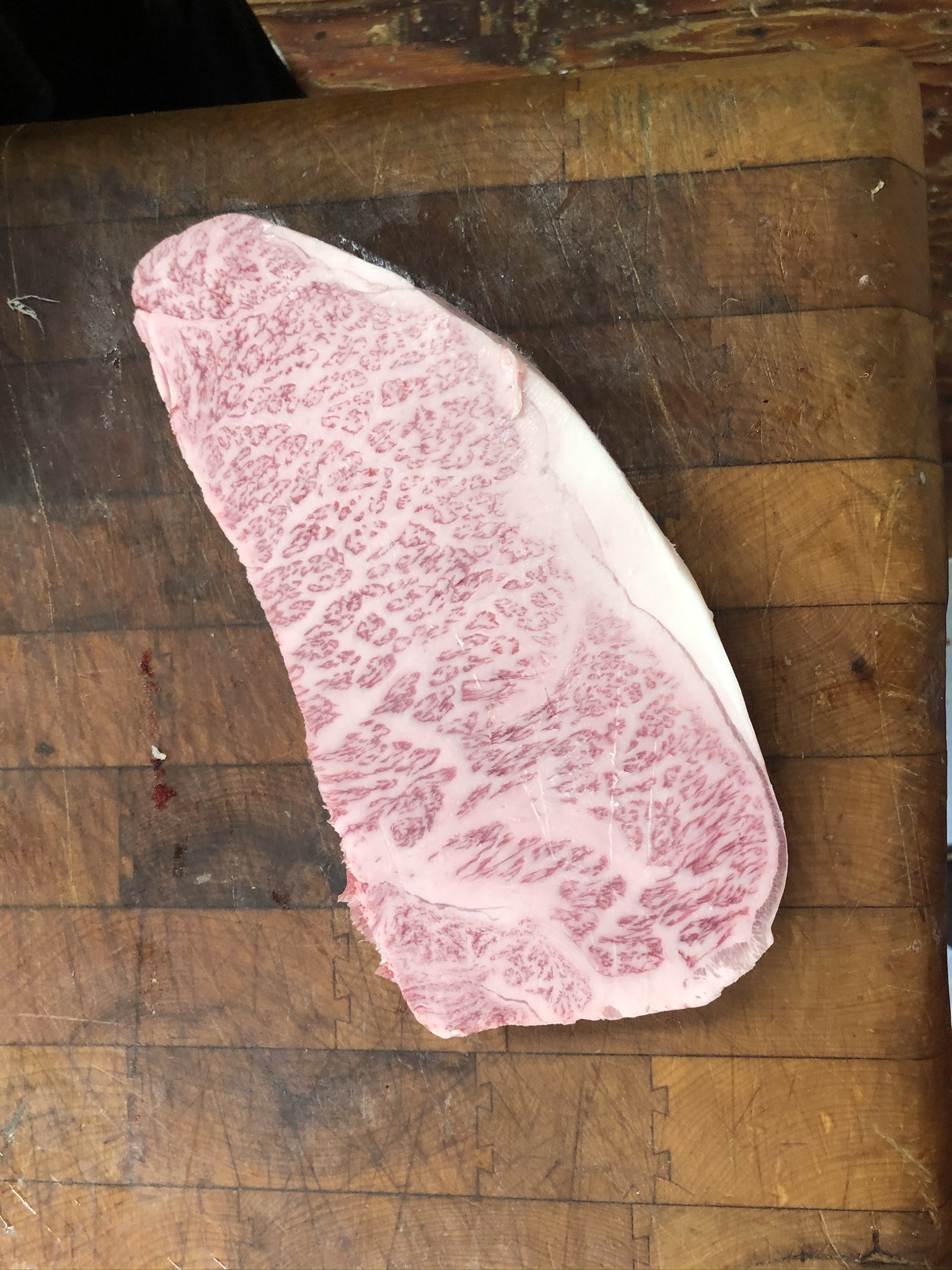
That’s probably about BMS 12, aka ultra-high prime.
OLD POST:
What exactly IS Wagyu and/or Kobe beef? You see it on menus all the time, right? And usually with insanely jacked-up prices, so high that they make your asshole pucker up tighter than a virgin’s snatch on prom night.
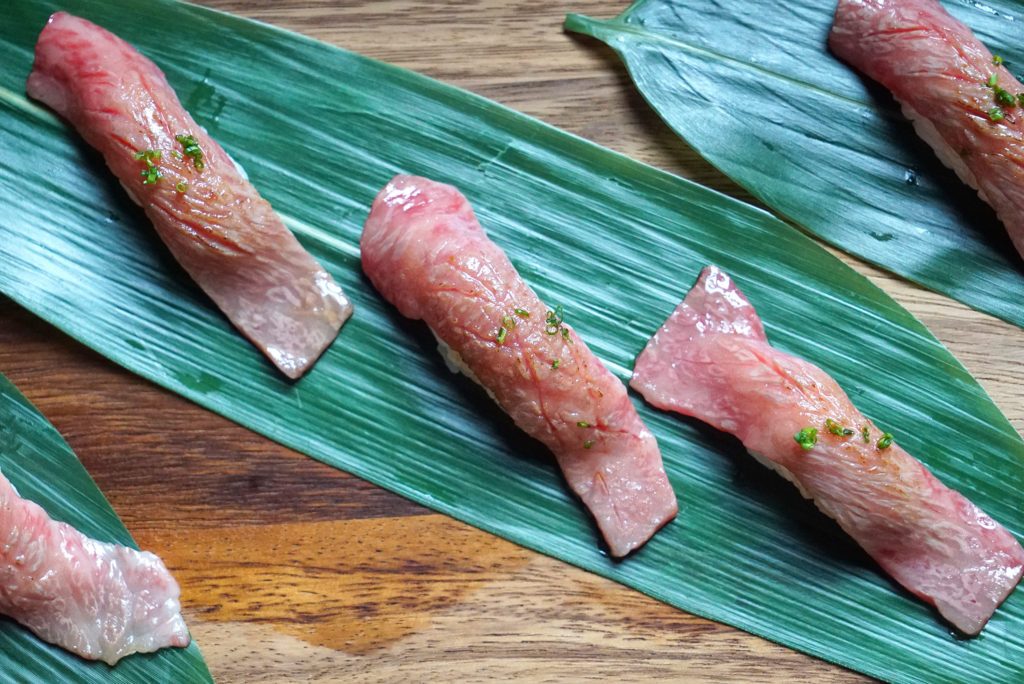
Well here’s a quick low-down on the delicious shit:
Wagyu: This is a term used to describe 4 Japanese breeds of cattle that are genetically predisposed to intense marbling of fat. There’s also two grading scales WITHIN the world of Wagyu. First is a letter and number pairing: A, B, or C and 1-5 within each grade, with A5 being the most marbled and C1 being the least. The second is the BMS (Beef Marbling Standard) score, which is a scale of 1-12. The best quality you can get in the US is A5 BMS 11 (not exactly sure why we can’t get A5 BMS 12). When this shit is on a menu, it’s pretty fucking expensive, and usually sold by the ounce. The four breeds of cattle are Japanese Black, Japanese Brown/Red, Japanese Polled and Japanese Shorthorn.
Kobe: Basically, this is beef from drunk, fat, happy Japanese cows, or so the myth goes. Under Japanese law, Kobe beef is a very specific product from a specific place, from one breed of cattle, with very strict rules. It is said that the cattle are hand-fed using high-energy feed, including beer and beer mash, to ensure tenderness and high fat content. The cattle are also hand-massaged to reduce stress. I guess it’s only fair to pamper them if we’re going to slice ’em up and grill ’em! NOTE that REAL Kobe beef is typically NOT available in the USA, so if you see it on a menu, understand that it may likely be a knock off (though probably still very good) from a place other than Japan. Kobe derives from a strain of the Japanese Black breed of cattle known as Tajima.
Matsusaka: This is also a Japanese Black breed, hailing from the Matsusaka region of Mie, Japan.
Hida Beef: I’ve written a bit more extensively on this brand after attending an event. It is Japanese Black that derives from the Hida region of Gifu, Japan. Click HERE for more info.
Okay now that we have a little bit of the basics set up, you should check out this informative expose on the US beef and restaurant industry’s misuse of the terms Kobe and Wagyu. It is a four part series that dives deep, and dovetails with some similar frustrations I expressed after dining at Sparks. Bottom line: if you see Kobe or Wagyu on a menu in the USA, know that it is meaningless and likely an imitation (though still quite possibly a delicious piece of meat), because the US does not import beef from Japan. I personally have seen and ordered “Kobe style” or “Australian Wagyu” items on menus at some of these places.
PART 1
PART 2
PART 3
PART 4
BUT WAIT!!! THERE’S MORE!!! Now, just to confuse you even further, SOME Japanese beef is now allowed back in the USA. See the link below.
New Info as of 9/28/12 – some Japanese meats allowed back into the US
Mmmmmmm…. I really don’t give a fuck where it’s from. If it looks like this, I’m salivating.
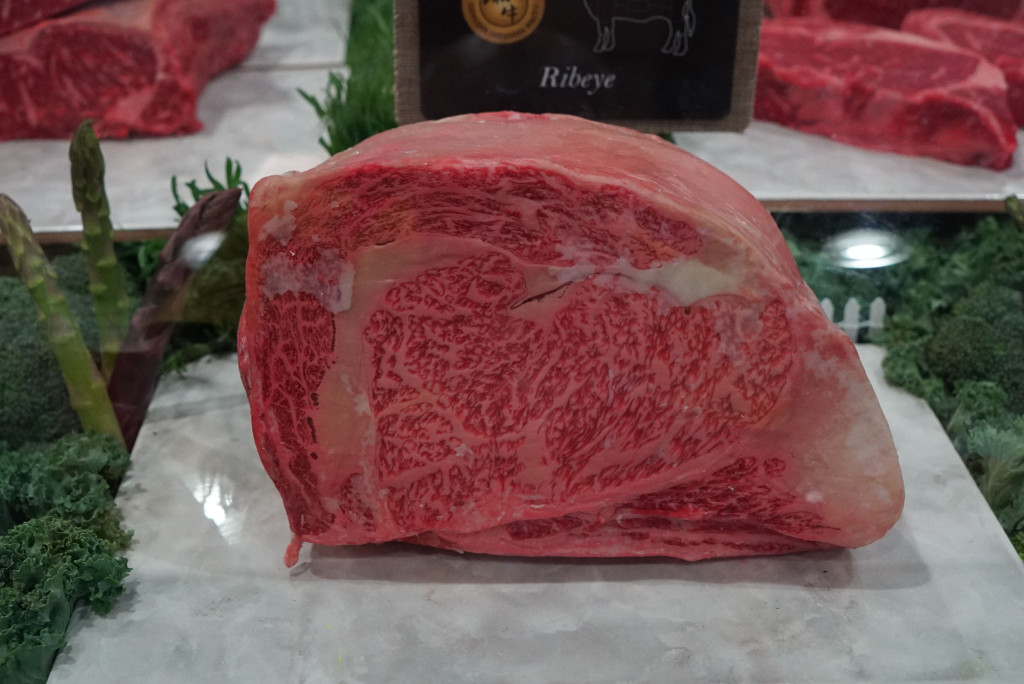
Yet another good summary of the history and current state of affairs on Wagyu and Kobe beef can be found HERE.
